

5 HUGE Differences Between a Ferry and a Cruise Ship (Real Examples)
If you are considering a cruise you may be wondering what the difference is between a cruise ship and a ferry. I’ve been on many cruises and have also taken trips on ferries. In this article, we will look at the differences between the two.
Many people wrongly assume that by having taken a trip on a ferry they’ll know what to expect from a cruise ship. This couldn’t be further from the truth in my experience.
What Is The Difference Between a Ferry and a Cruise Ship?
Ferries are small ships designed to transport people and cargo from one destination to the other. Cruise ships are usually much larger than ferries and they usually only transport passengers. Cruise ships are designed with leisure in mind and have many more onboard amenities than ferries.
Ferries usually only make short journeys whereas cruise ships sail for weeks at a time. The purpose, ship design, onboard activities, and onboard experience all vary greatly.
Below are examples of a small ferry, a large ferry, a mid-sized cruise ship, and a large cruise ship.
A Cruise Ship and a Ferry Have a Different Purpose
What is the purpose of a ferry.
The primary purpose of a ferry is to transport guests from A to B. Ferrys are primarily a mode of transport and they often carry cargo and some carry cars. Ferries often provide a cheap alternative to other methods of transportation such as flying and as a result are very popular in some places.
Ferry Examples:
One of the most popular ferry routes is the Staten Island Ferry in New York. I have taken the journey on the Staten Island Ferry and although it is very functional and provides great scenery it’s far from a leisure activity. The ferry carries 70,000 people PER DAY between lower Manhatten and Staten Island.
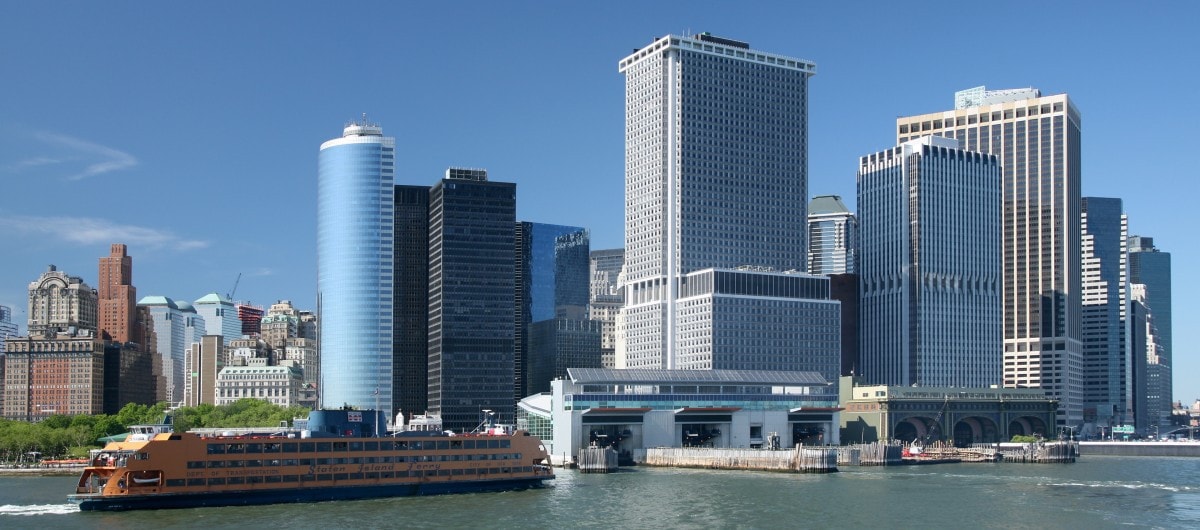
Photo: Daniel Schwen
Another very popular ferry route is the star ferry in Hong Kong. I enjoyed this ferry trip more than the Staten Island ferry because we were able to sit outside with fresh air but even still it is very much a no thrills ride.
What Is The Purpose of a Cruise Ship?
The primary purpose of a cruise ship is to be a floating resort for the passengers onboard. Cruise ships are full of cabins, restaurants, bars, entertainment venues, and swimming pools. For many people, I included, the idea of going on a cruise is as much about the ship as it is the destinations visited.
Cruise Ship Examples:
The most popular cruise destination is the Caribbean. Guests from all over the world head to the Caribbean year-round to take a Caribbean cruise. Most Caribbean cruises are upwards of 5 or so nights long and are generally pretty relaxed and fun.
There are many options for Caribbean itineraries including Eastern, Western, and Southern Caribbean cruises. To learn more about how these different itineraries affect the price, check out this post: How Much Does a Caribbean Cruise ACTUALLY Cost? (13 Examples)
Another very popular cruise destination is the Mediterranean. Mediterranean cruises sail year-round and they are particularly popular as Mediterranean cruises are able to visit a number of countries within a week or so. I’ve taken a number of Mediterranean cruises and usually visit around 5 countries in 7 nights. To do a similar trip on land would be incredibly difficult, and expensive!
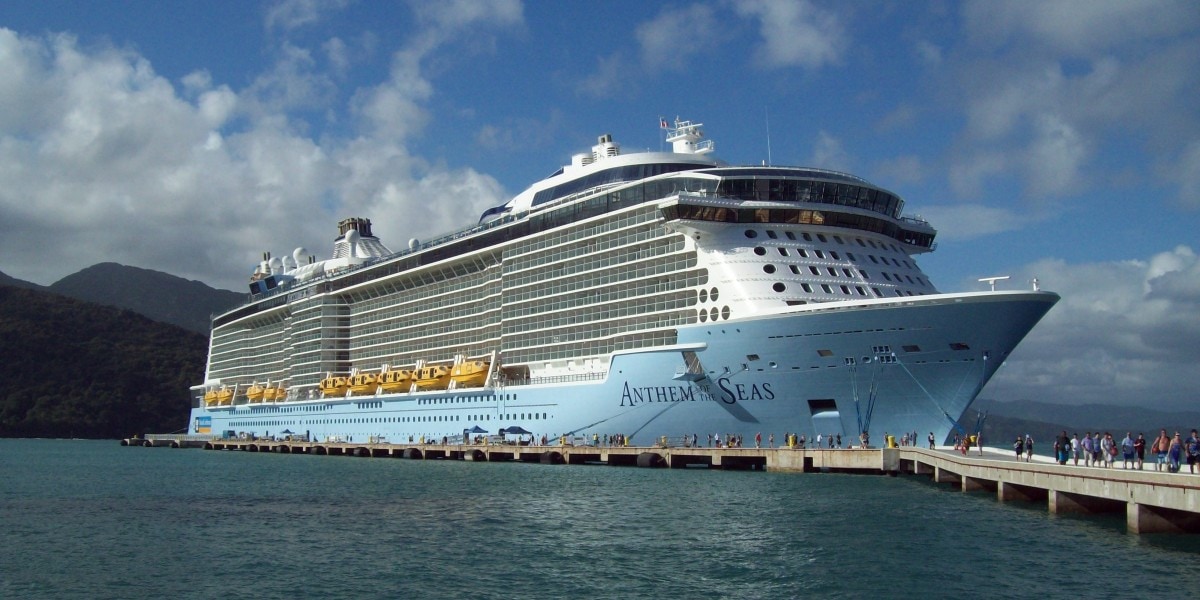
What Is The Difference in Purpose?
Guests board cruise ships to enjoy the amenities of the cruise ship whereas guests board ferries to get from A to B. You can also transport things like cars and cargo on ferries which cruise ships are not designed to do.
Size & Ship Design
Generally speaking, ferries are much smaller than cruise ships and you’ll often find that they have a different design. The design of ferry does vary dramatically, some will be flat and lower to the river/ocean and others will look more similar to ocean cruise ships.
The Staten Island ferries are around 3000 gross tons, the largest cruise ship is almost 10x as big at 228,000 tons.
Despite the difference in size, you’ll often find a similar amount of passengers onboard. On cruise ships, guests have much more space per person as they need a cabin, places to eat, and relax. On ferries, guests are usually just sat together and don’t need much room.
Ferries also don’t need anywhere near as many crew members onboard as cruise ships do. A typical ratio on a cruise ship is 1 crew member to every 3 passengers. On the state island ferry, you’ll find 3000 guests with only crew members. That’s 1 crew member to every 200 passengers.
Onboard Activities
What is there to do on a ferry.
On a ferry, your options are very limited. In most cases for a short journey, you will just be sat down. You may be able to look at the view or if you’re in the middle as I was on the Staten Island ferry you may not be able to see a thing.
On some larger ferries, you’ll find basic restaurants and bars. I’ve personally never felt the need to eat on a ferry as I get too seasick but more on that later!
Lots of ferries do provide free WiFi to pass the time but as most journeys are short there doesn’t need to be any entertainment onboard. Taking a ferry is similar to taking a ride on a train but with a few added things on occasion like video arcades or game rooms.

What Is There to do on a Cruise Ship?
Cruise ships are filled with restaurants, bars, theatres, swimming pools, casinos, lounges, and much much more. Onboard amenities do of course depend on the cruise line and ship but almost all ships will have multiple bars, restaurants and entertainment venues.
On a cruise, you’ll find a daily schedule that is full of activities. On some of the more lively family-focused cruise lines, you’ll find things like ropes courses, surf simulators, and zip lines. It’s often easier to think of a cruise ship as being a floating resort or city at sea. You’ll find everything that you would find in a small city on land like gyms, hairdressers and spas!
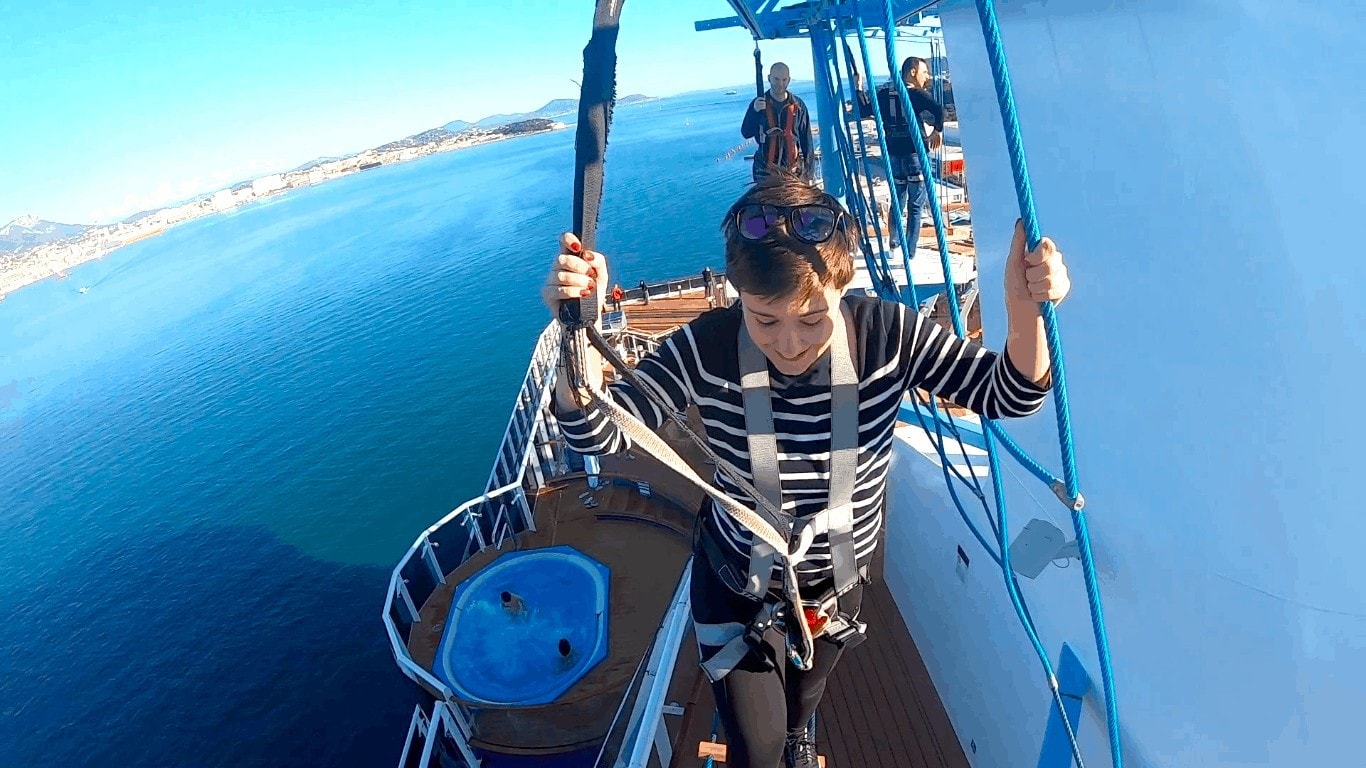
What Is The Difference in Onboard Activities?
There is a lot more to do on a cruise ship than on a ferry. Entertainment is provided and there are numerous choices for how to spend a day on board. Ferries are more functional than cruise ships and although they may provide some bars and restaurants the experience and quality is usually very limited.
What Movement do you Feel on a Ferry?
If you are prone to travel sickness you are much more likely to feel seasick on a ferry than on a cruise ship. It’s common for people who don’t even suffer with seasickness to feel unwell on ferries, especially if eating or drinking too much!
I almost always take seasickness pills when taking a trip on a ferry. The exception to this would be where I am able to sit on the top deck and get some fresh air, this usually helps but I still wouldn’t want to do it for a prolonged period of time.
You’ll often feel vibrations and bumps and judders when taking a trip on a ferry. Ferries are simply not designed for pleasure cruises, they are designed with a purpose in mind and passenger comfort tends to come secondary to speed and efficiency.
What Movement do you Feel on a Cruise Ship?
I am an incredibly seasick person. I get seasick on almost everything but interestingly enough I very rarely get seasick on cruise ships. Due to the size, design, and stabilizers of the cruise ship, the movement that you’ll feel onboard is usually very little.
There are of course occasions where a ship may be caught in bad weather where the movement felt increases but even still this is very rare and doesn’t put me off of cruising. To learn more about what it feels like to be on board a cruise ship, including where you’ll feel the motion the most, check out this post:
You May Feel Movement on a Cruise Ship – Here’s When and Why
What’s Included in Your Fare?
The majority of ferry trips only last for a few minutes or a few hours. Cruises usually last for multiple days and can last weeks, even months! This not only impacts the experience but also how much it’ll cost.
Realistically for a cruise, you’re looking at least $100 per night but this includes your accommodation, meals, entertainment, and transport between destinations.
A ferry on the other hand is much cheaper with a trip sometimes costing nothing at all (the Staten Island ferry in New York is free). As a result your fare only includes transportation from place to place. Any food bought onboard is at an extra cost.
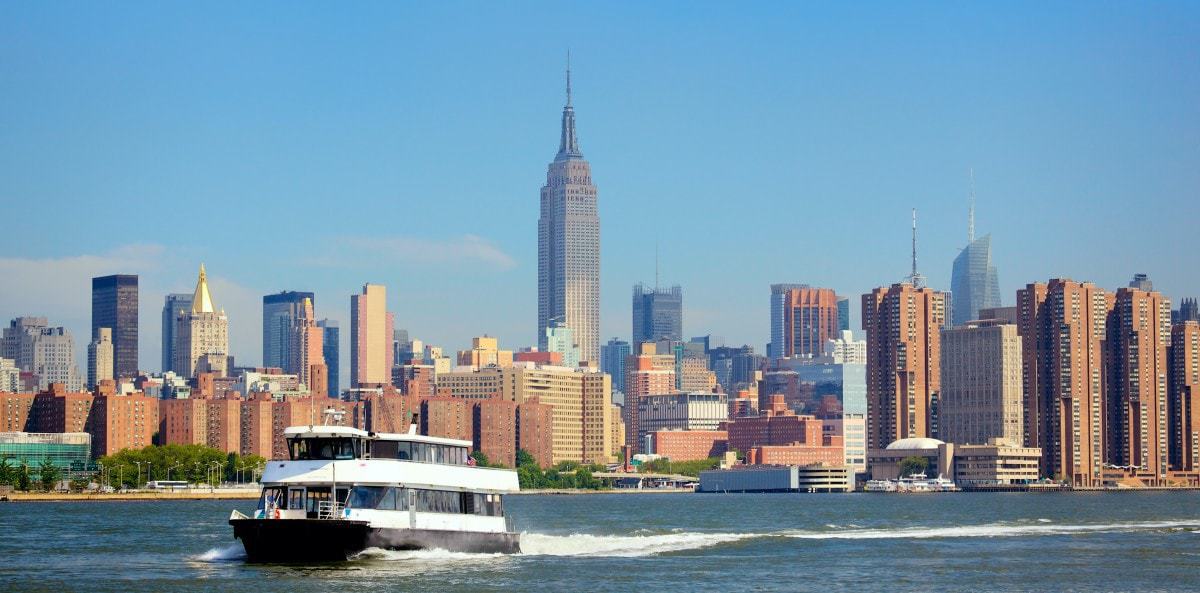
Large Ferries
There are some ferries that are as large as small cruise ships and look very similar. These are definitely the exception to the rule but I do think it’s interesting to see these ships.
Some ferries which look very similar to cruise ship are those from the Silja line. Onboard Silja ships you’ll find restaurants, bars, shops, and even entertainment. The cruises taken onboard are longer than that that you’d find on your average ferry and as a result, the ship has cabins and is well equipped for longer journeys.
Below is a photo of the central shopping center from Silja Serenade. Photo from Sanna at VeganCruiser !
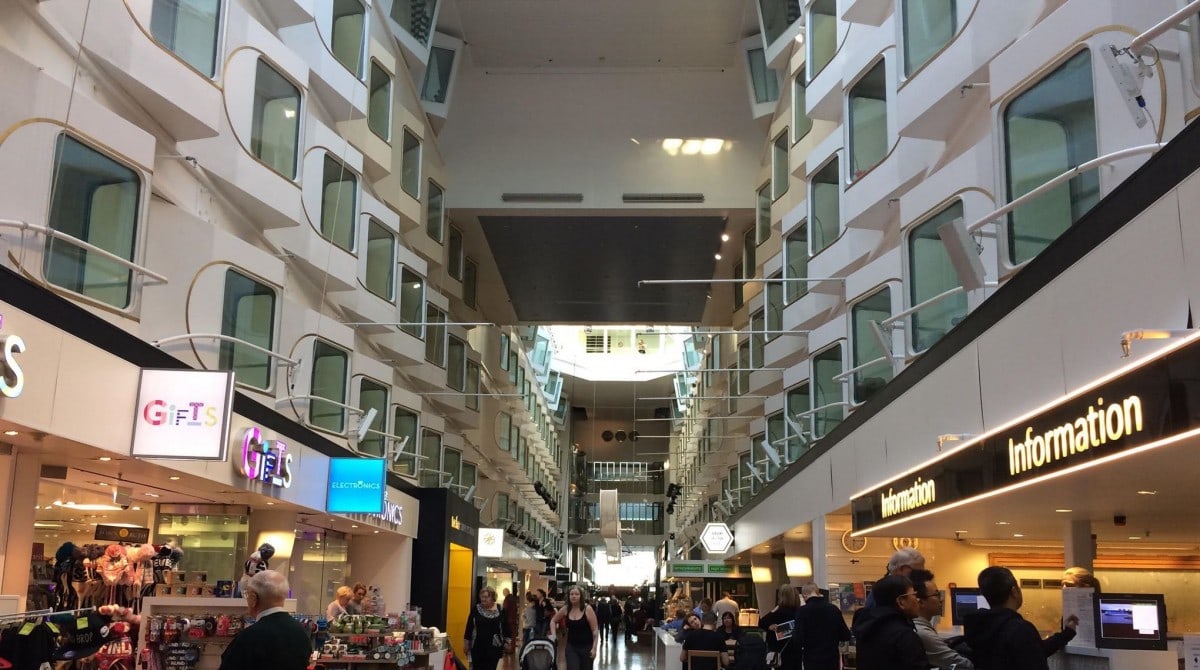
To Conclude:
Taking a trip on a ferry is a great way to get from A to B. Ferries are usually basic ships with no added thrills onboard. Cruise ships, on the other hand, are destinations in themselves.
Taking a trip on a ferry is nothing like taking a cruise and if you’ve had a negative ferry experience in the past don’t let this put you off cruising! It really is like comparing apples to oranges.
I’ve been on 32 cruises to date but always try to avoid ferries where I can as they make me feel seasick and I don’t really enjoy the onboard experience.
Want to learn how to cruise well on a budget? Start here: How to Cruise For Less
Facebook Group: ?? Cruising Isn’t Just For Old People
YouTube Channel: ❤️? Emma Cruises
For exclusive access to behind the scenes content, join here: ?? Emma Cruises Patreon
Weekly newsletter: ?? Weekly Newsletter
Enter your email address below:
- How to book?
- EUR (€) GBP (£) NOK (kr) USD ($)
The difference between a ferry and a cruise ship
Video of 11 differences
Itinerary and schedules, the different purposes of the ships, duration and the length of journey, onboard amenities, accommodations of a ferry vs a cruise ship, conclusion of ferries vs cruises.
If you're planning a trip on the water, it's important to know the difference between a ferry passenger-ship and a cruise ship . While both will take you across the open seas, they offer vastly different experiences. So, weigh anchor and set sail with me as we explore the differences between these two types of ships.
Ferry passenger-ships usually (in almost 90%+ of the cases) have a fixed schedule, with predetermined departure and arrival times.
In contrast, cruise ships offer more flexible itineraries, with multiple ports of call and a variety of shore excursions and activities to choose from. This gives you the opportunity to explore several destinations in one trip.

Maybe the most important reason of all: Ferry passenger-ships and cruise ships serve very different purposes. The main function of a ferry passenger-ship is to transport passengers and vehicles between two points on a fixed route. They are a vital mode of transportation for commuters, tourists, and locals alike. In contrast, cruise ships are all about the leisure experience. They offer a floating vacation with entertainment, relaxation, and adventure as their main goals.
The length of the journey is another key difference. Ferry passenger-ships typically travel shorter distances, with the voyage lasting anywhere from a few hours to a day.
On the other hand, cruise ships are designed for longer journeys, with some trips lasting several weeks . So, if you're looking for a quick trip or a longer vacation, that will affect which type of ship you choose.
When it comes to onboard amenities, there's a big difference between the two types of ships. Ferry passenger-ships generally offer basic seating, restrooms, and minimal food service.
In contrast, cruise ships are known for their extensive facilities, such as swimming pools, spas, theaters, gourmet restaurants, and more. So, if you're looking for a luxurious experience, a cruise ship may be the better choice.
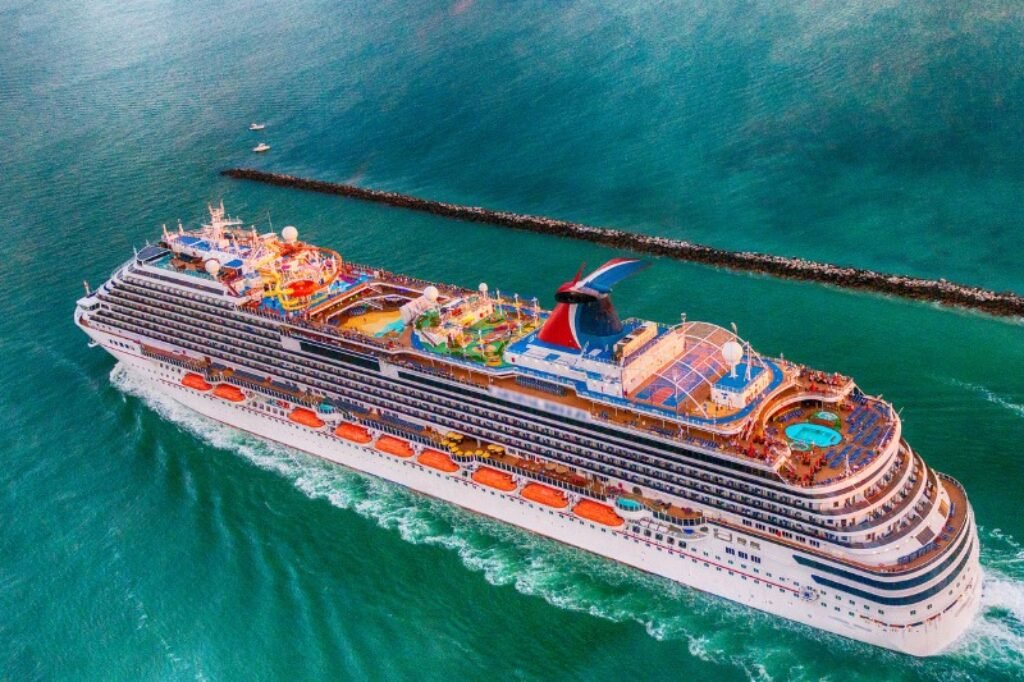
There are, however exceptions to this rule, as the ferry from Kiel to Oslo (connecting Norway to Germany ) is for instance an old cruise ship and because of that this ferry is a very luxurious one . More modest cruise ships won't match this ferry.
Finally, accommodations on ferry passenger ships are often limited to basic seating or cabins with bunk beds.
Cruise ships, on the other hand, have a wide range of accommodations available, from inside cabins to lavish suites with private balconies. If you're looking for a more comfortable and luxurious stay, a cruise ship may be the way to go.
Also, here there are exceptions, as ferries are sometimes old cruise ships!
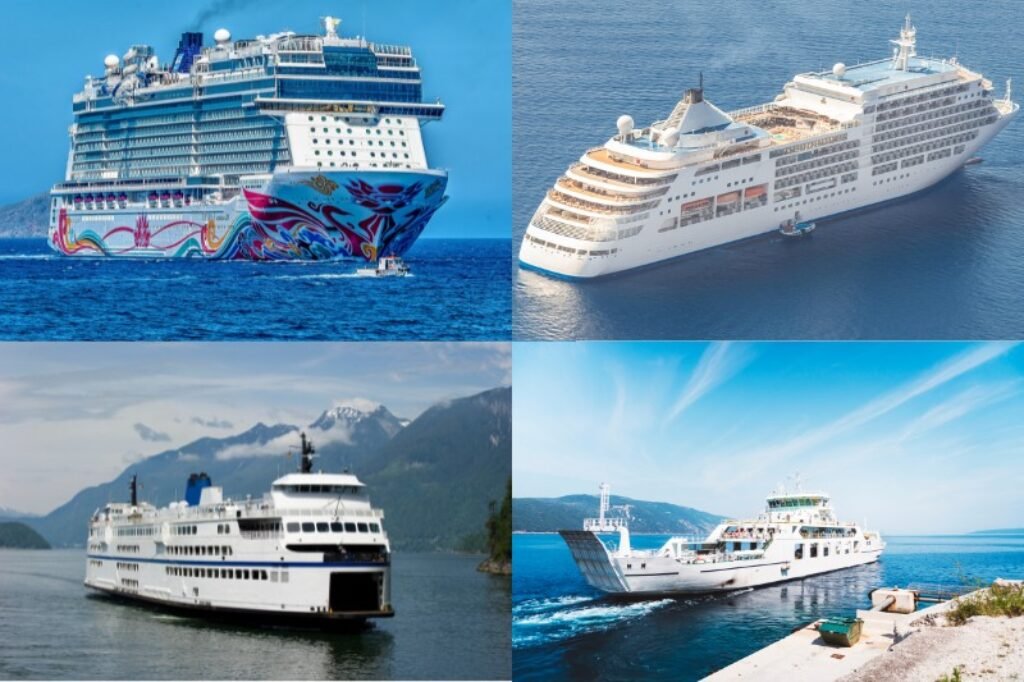
In conclusion, while both types of ships offer water transportation, they serve very different purposes. Ferry passenger-ships are all about getting you from point A to point B quickly and efficiently, while cruise ships are all about the leisure experience. they are destinations in themselves. If you're looking for a quick commute or a relaxing vacation with all the amenities, make sure to choose the right type of ship for your journey.
Use our ferry guides and maps
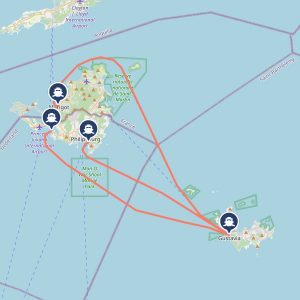
St Martin to St Barts
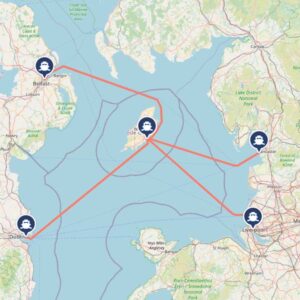
Ferry to isle of Man from Liverpool

To Vancouver from Nanaimo

What is the cost of a ferry crossing during the high season?
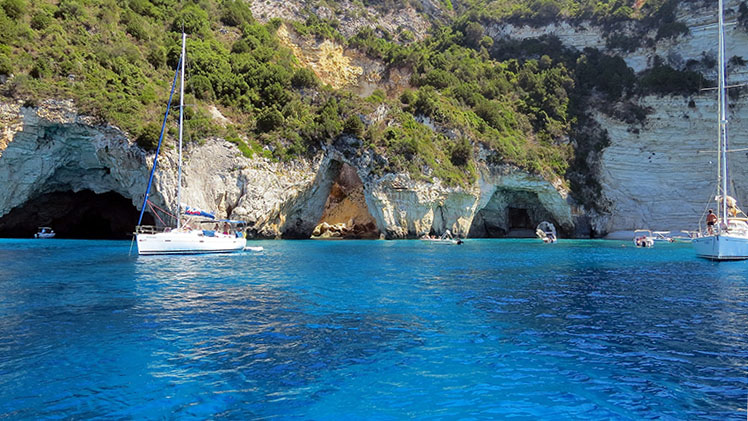
Two jewels of the Ionian Sea: Paxi and Anti-Paxi
Tags: Global
Meet Jochem Vroom – Online Investor, Digital Strategist and Experienced Ferry Traveler .When he's not busy running his businesses, Jochem loves nothing more than exploring new destinations by sea.At FerryGoGo, Jochems' primary mission is to safeguard the integrity and excellence of our content and website. Jochem achieves this by meticulously verifying reviews, routes, and maintaining continuous communication with ferry operators. This commitment ensures the authenticity of the content featured on FerryGoGo.com.
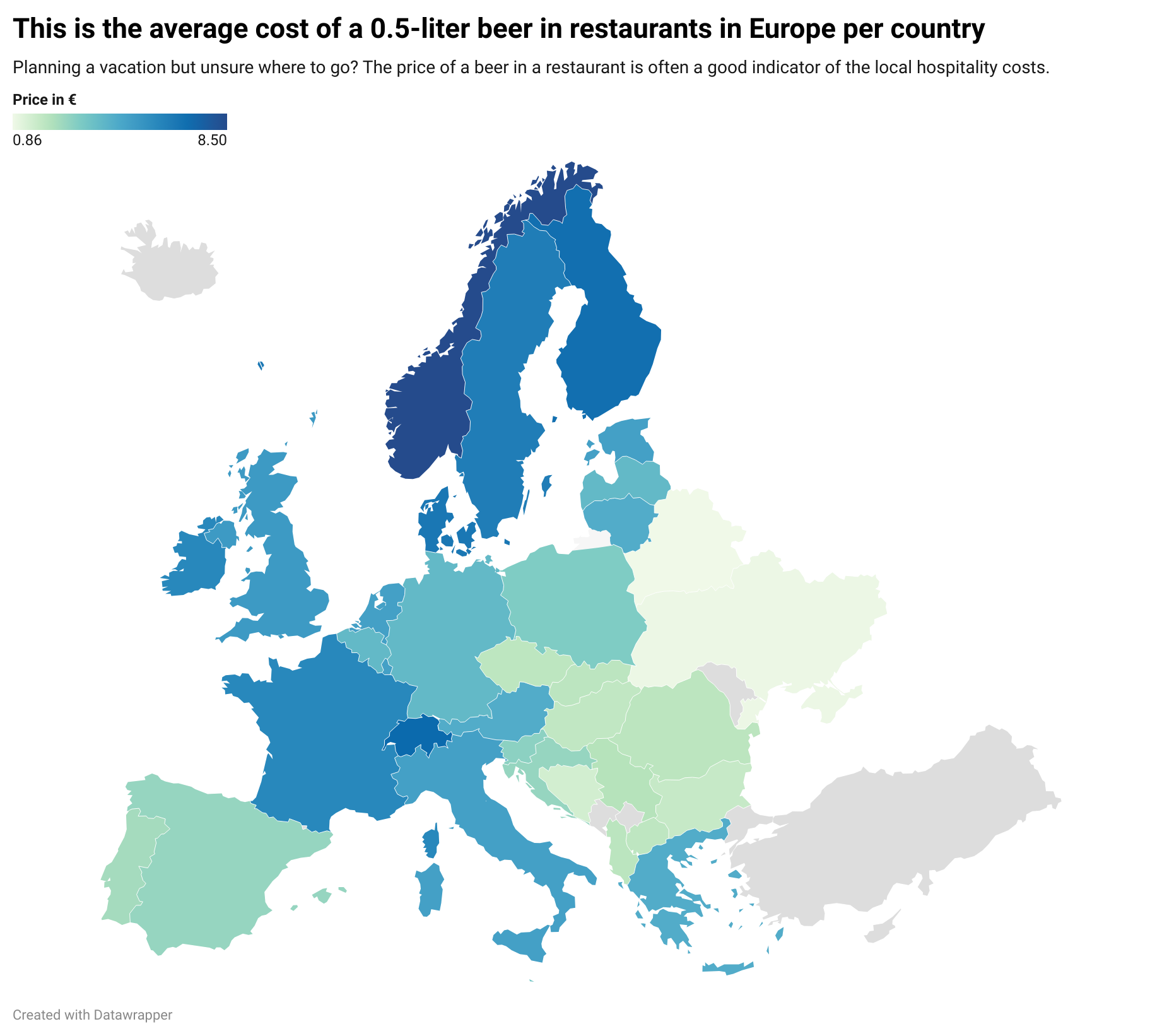
- This is the cost of a beer across Europe
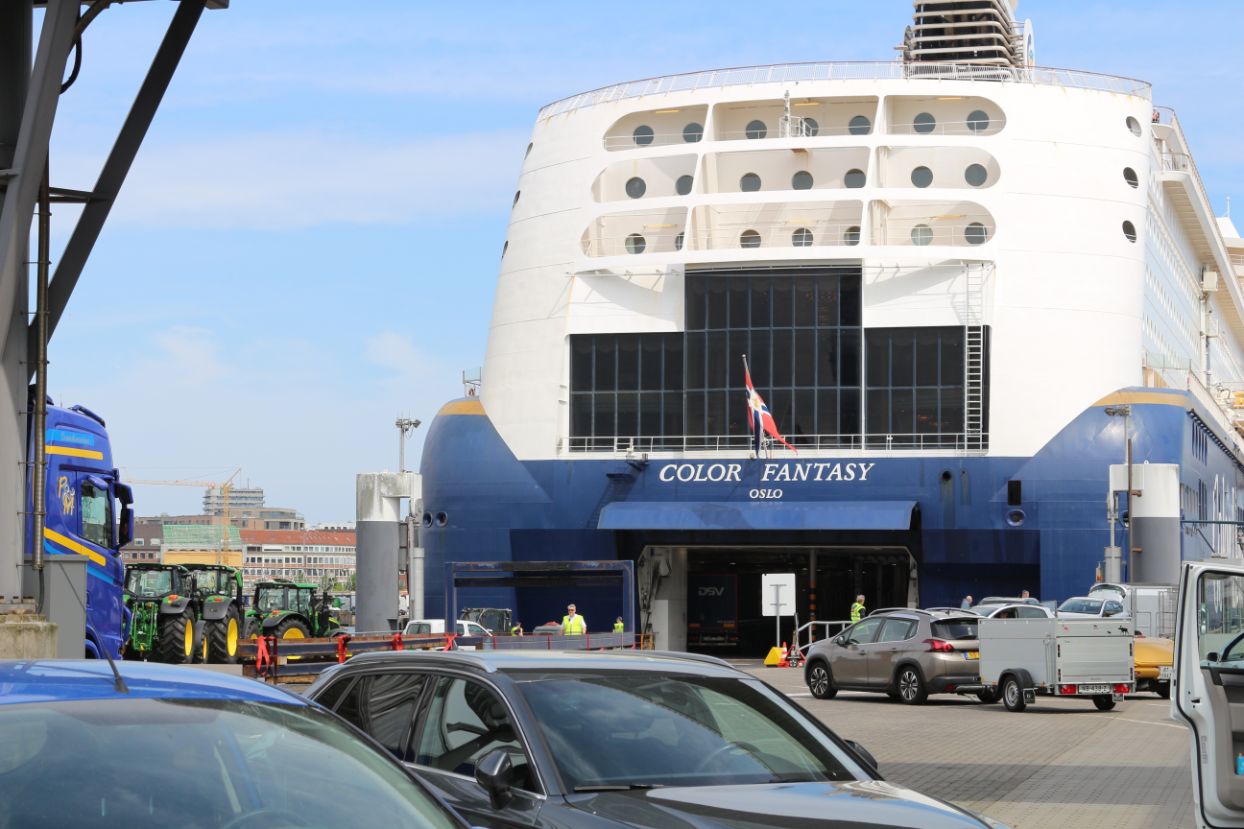
- Significant Drop (-22%) in Rental Car Prices Across Europe
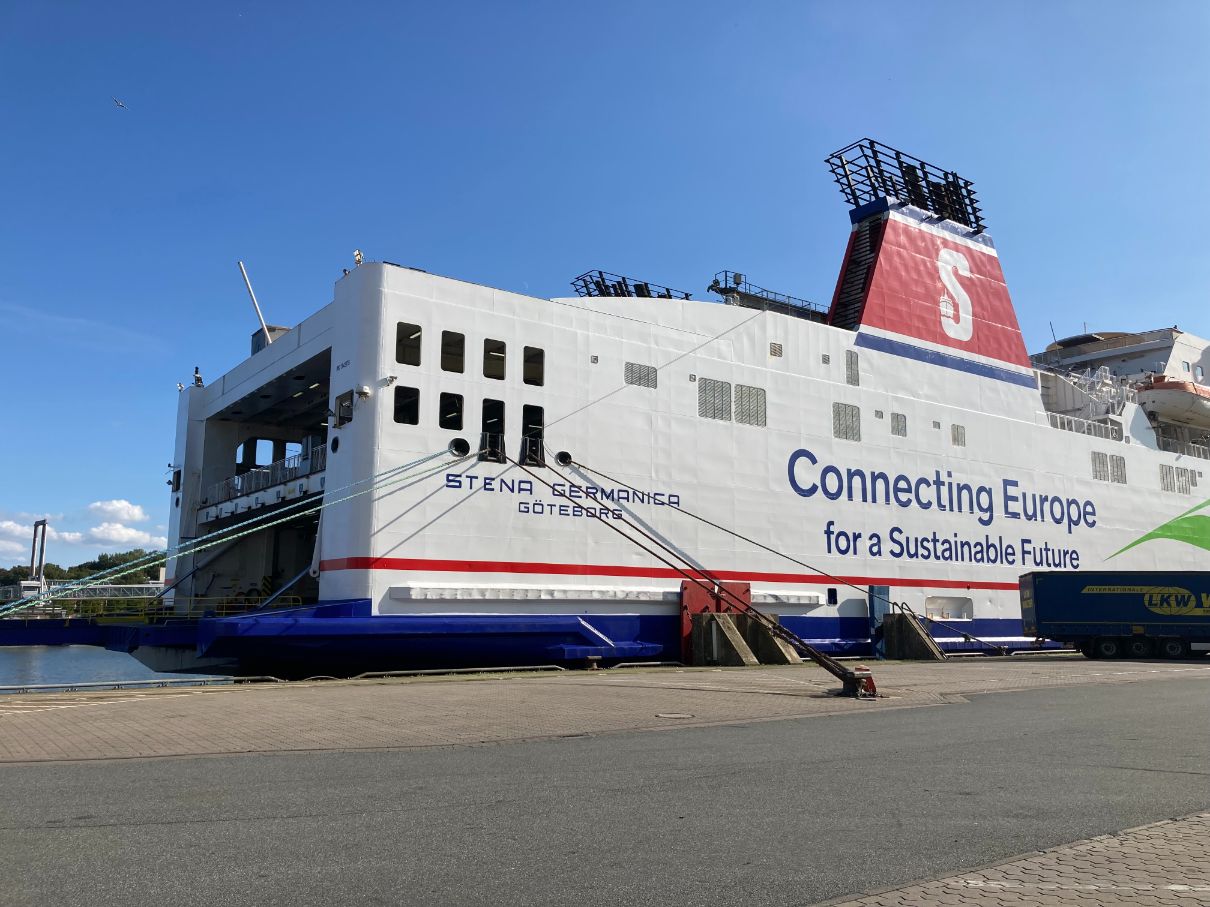
- This is what you’ll spend this summer on a ferry crossing.

- Historic ferry crossings from the UK to Scandinavia
Leave a reply Cancel reply
Save my name, email, and website in this browser for the next time I comment.
Smooth sailing with the FerryGoGo ferry guides to your dream destinations. Discover the perfect ferry routes with our interactive maps and essential travel insights.
About | Contact | Disclaimer | Privacy & cookies
🌐 Deutsch 🌐 Dutch
FerryGoGo aims to make ferry travel accessible and easy for everyone. We believe that by providing you with the most accurate and reliable information on ferry routes, we can help you discover new destinations and create unforgettable experiences.
- Ferries to Spain
- UK to Norway ferry (Indirect)
- Ferries to France from the UK / England
- Ferries to Ireland (from the UK)
- Avoid Seasickness
- Ferry Companies
- #1 Alaska Interactive Map
- To Portugal ! (from UK)
- Ferries to the Netherlands
- 2 Maps: Ferry to Paris
- Dover Calais Ferries
- Tinos: sunny and spiritual
- Follow us on 𝕏


Is Ferry Boat a Cruise: Exploring the Differences
Ferries typically lack the wide range of extravagant amenities that can be found on cruise ships, which often feature numerous dining options, entertainment venues, and recreational facilities. Consequently, it can be concluded that while ferry boats and cruise ships share similarities in their function as modes of transportation, the distinctions in size, purpose, and onboard experiences make it apparent that they aren’t interchangeable entities.
Is a Ferry Considered a Cruise Ship?
Is a ferry considered a cruise ship? Ferries are primarily designed as transportation vessels, taking passengers from one location to another, typically across bodies of water. They’re usually focused on efficiency, providing a swift and reliable mode of transportation.
In contrast, cruise ships are built for leisure and vacation purposes. They offer a wide range of services and amenities to entertain passengers during their journey. Cruise ships often travel to multiple ports or destinations, allowing passengers to explore different locations before returning to the starting port. The focus is on creating an enjoyable experience for guests, rather than simply getting them from point A to point B.
Another distinction lies in the length of the journey. Ferries are primarily used for short to medium distance travel, such as crossing a river or crossing between nearby islands. They operate on fixed schedules, offering frequent departures to cater to commuters and travelers. Cruise ships, however, are meant for longer trips, often spanning several days or even weeks. Passengers can book cabins and enjoy a more extended vacation experience on board, with various activities and entertainment options provided.
Types of Ferries: Discuss Different Types of Ferries, Such as Car Ferries, Passenger Ferries, and High-Speed Ferries, and How They Differ From Cruise Ships in Terms of Design and Functionality.
There are different types of ferries that serve various purposes. One common type is a car ferry, which is designed to transport vehicles across bodies of water. These ferries typically have large open decks for vehicles and passengers, as well as designated parking areas. On the other hand, passenger ferries are specifically built for transporting people and typically offer amenities such as seating areas and onboard facilities like cafes and restrooms.
High-speed ferries, as the name suggests, are designed for faster travel. They’re equipped with powerful engines that allow them to reach higher speeds than traditional ferries. These ferries often have a sleeker design and offer a more streamlined experience.
While ferries and cruise ships are both maritime vessels, there are significant differences between them. Cruise ships are generally larger and more luxurious, designed to provide an all-inclusive vacation experience. They feature multiple decks with various amenities like swimming pools, restaurants, entertainment venues, and even accommodation options such as cabins. In contrast, ferries are primarily focused on transportation and may not offer as many recreational facilities or overnight accommodations.
Overall, the main distinction between ferries and cruise ships lies in their purpose and design. Ferries prioritize efficient transportation, while cruise ships prioritize leisure and entertainment.
Ferries are primarily designed for practical transportation, accommodating both passengers and cargo. So, to answer the question, a ferry boat isn’t considered a cruise due to it’s smaller size, limited amenities, and focus on efficient transportation rather than providing a leisurely experience.
Related Posts
How many formal nights on a royal caribbean cruise, where do river cruise ships dock in st. petersburg, is the royal princess cruise ship too big, can wines be brought aboard viking river cruises exploring wine policies.

Ferry vs. Cruise — What's the Difference?
Difference Between Ferry and Cruise
Table of contents, key differences, comparison chart, journey duration, compare with definitions, common curiosities, what is the main purpose of a ferry, how long does a typical cruise last, what types of amenities can i find on a ferry, how expensive is a cruise compared to a ferry, can i take a ferry for a vacation, do ferries operate internationally, are there vehicles on cruises, what is the primary focus of a cruise ship's design, what is the difference in speed between a ferry and a cruise, are cruises suitable for families, can i work remotely from a cruise, are meals included on ferries, how do i choose between a ferry and a cruise, what safety measures are common on ferries, what is the environmental impact of using a ferry vs. a cruise, share your discovery.

Author Spotlight
Popular Comparisons

Trending Comparisons

New Comparisons

Trending Terms

Cruise Spotlight
Helping you find cruise ships you'll love
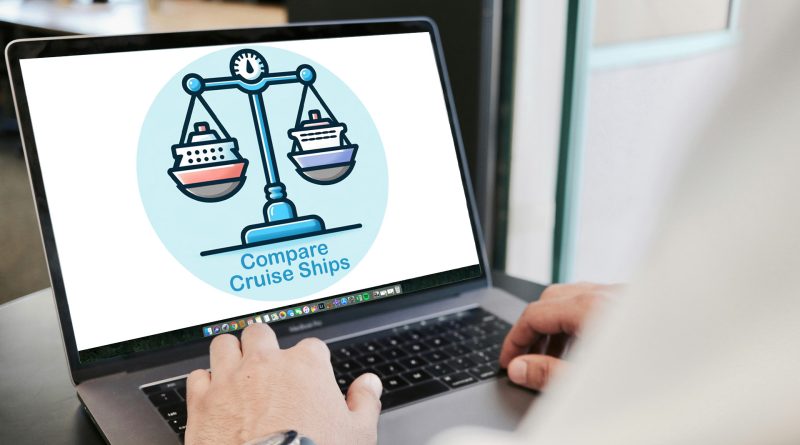
Cruise Ship Comparison Tool
Can’t decide between two cruise ships? Our Cruise Ship Comparison Tool will let you see the differences between two ships. We did all the research to make it easy for you. Look at the differences in size, number of guests, types of food, and various activities. We also help you compare how much is included so you know how much you might end up spending on board.
Our Cruise Ship Comparison Tool lets you look at the following:
- Number of guests
- Number of crew
- Dining options and menus
- Includes versus extra fee dining options
- Bars and menus
- Features and ammenities
- Onboard costs like gratuities, drinks, and internet
Choose two ships below to see how they compare to each other.
First ship:
Second ship:
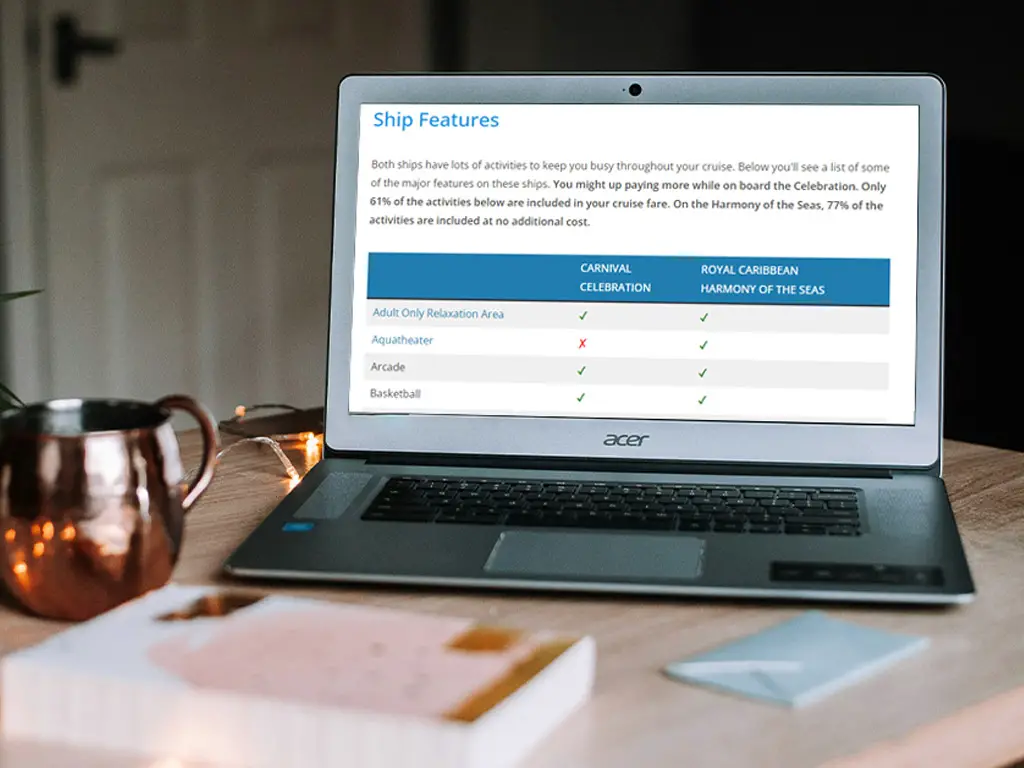
Ferry vs. Ship
What's the difference.
Ferries and ships are both modes of transportation used to carry passengers and cargo across bodies of water. However, there are some key differences between the two. Ferries are typically smaller vessels that operate on shorter routes, such as crossing rivers or connecting nearby islands. They are designed to transport people and vehicles, and often have multiple decks for passengers to move around. On the other hand, ships are larger and more versatile, capable of navigating longer distances and even crossing oceans. They are built to carry large amounts of cargo and can accommodate a significant number of passengers. Ships also have more amenities and facilities, such as restaurants, entertainment areas, and cabins for overnight journeys.

Further Detail
Introduction.
Ferries and ships are both vessels used for transportation across bodies of water. While they share similarities, they also have distinct attributes that set them apart. In this article, we will explore the differences and similarities between ferries and ships, examining their design, purpose, capacity, routes, and amenities.
Ferries are typically smaller vessels designed for short-distance travel, often shuttling passengers and vehicles across rivers, lakes, or narrow waterways. They are usually equipped with ramps or doors to facilitate the loading and unloading of vehicles and passengers. Ships, on the other hand, are larger and more versatile vessels designed for long-distance travel across oceans. They are built to withstand rough sea conditions and are equipped with advanced navigation systems and stabilizers to ensure stability during extended voyages.
While both ferries and ships can be powered by various means such as diesel engines or electric motors, ships often have more powerful engines due to their larger size and the need to cover greater distances. Ferries, on the other hand, may have multiple propulsion systems to maneuver in tight spaces or shallow waters.
Ferries primarily serve as a means of transportation for passengers and vehicles, connecting specific points across bodies of water. They are commonly used for daily commuting, tourism, and transportation of goods in coastal areas. Ships, on the other hand, have a broader range of purposes. They can be used for transportation of cargo, including containers, bulk goods, and oil tankers. Additionally, ships are often utilized for cruises, naval operations, research expeditions, and even as floating hotels or entertainment venues.
Due to their smaller size and intended use for short-distance travel, ferries generally have a more limited capacity compared to ships. Ferries can range from small vessels carrying a few dozen passengers and a handful of vehicles to larger ones accommodating hundreds of passengers and numerous vehicles. Ships, on the other hand, can vary greatly in size and capacity. Some cargo ships can carry thousands of containers, while passenger ships can accommodate thousands of people, offering various amenities such as restaurants, theaters, and swimming pools.
Ferries typically operate on fixed routes, connecting specific ports or terminals. They often have a regular schedule, allowing passengers to plan their trips accordingly. These routes are usually shorter and more localized, serving the needs of nearby communities. Ships, on the other hand, have a wider range of routes, covering vast distances across different bodies of water. They can travel between continents, visit multiple ports, and even circumnavigate the globe. Ships often follow established shipping lanes and may have more flexibility in choosing their routes based on trade, tourism, or other factors.
While both ferries and ships provide basic amenities such as seating areas, restrooms, and safety equipment, ships generally offer a wider range of amenities due to their larger size and longer voyages. Passenger ships often feature luxurious cabins, multiple dining options, entertainment venues, fitness centers, and even spas. Some modern cruise ships are like floating cities, providing a plethora of activities and services to cater to the needs and preferences of their passengers. Ferries, on the other hand, focus more on efficient transportation, with fewer amenities beyond the essentials.
In conclusion, ferries and ships are both essential vessels for transportation across bodies of water, but they differ significantly in design, purpose, capacity, routes, and amenities. Ferries are smaller, designed for short-distance travel, and primarily serve as transportation for passengers and vehicles. Ships, on the other hand, are larger, more versatile, and used for long-distance travel, carrying cargo, and providing various amenities for passengers. Understanding these differences can help individuals choose the most suitable option for their specific travel needs.
Comparisons may contain inaccurate information about people, places, or facts. Please report any issues.

What is Difference Between Cruise Ships And Ocean Liners?
Those who have been on a passenger ship for vacation or an excursion at least once in their lifetime are left charmed by the splendorous experience during their voyage.
For those who still haven’t, reading about them in books and magazines never fails to captivate interest, or even beholding them in real life from a harbour or a seaside spot is also appealing to the eye.
Speaking of movies, it goes without saying that the first name which inevitably pops up in our minds is the legendary Titanic (movie released in 1997), an engineering marvel dating back to over a century ago, which unfortunately met its doomed end after colliding with a behemoth iceberg in the middle of the Atlantic.
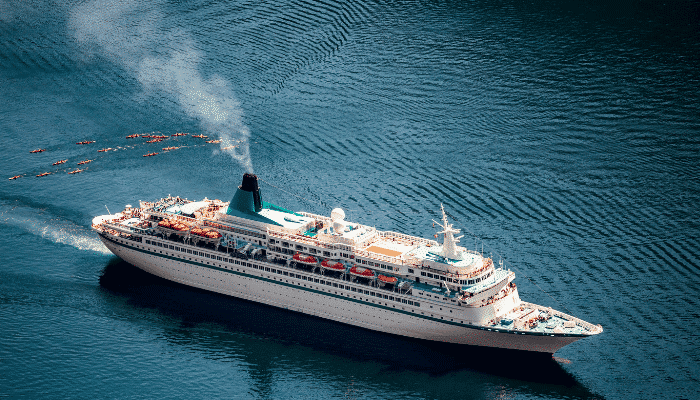
Even before and after Titanic, a slew of movies has been made with passenger ships plying on the vast oceans as a backdrop. In the literary world, several allusions to passenger vessels date back as early as the history of ships.
Even two centuries before the Titanic sank, The Life, Adventures and Piracies of the Famous Captain Singleton, written by Daniel Defoe, of the renowned Robinson Crusoe fame, garnered a significant amount of literary attention.
As we know, out of the broader classification of vessels into multiple types like general-purpose, cargo, defence, container, scientific research, etc., passenger ships are the types of merchant’s vessels that are dedicated to ferrying passengers across seas or oceans – The earliest mode of international transportation in the history of modern mankind. with significant development in the aviation sector over the last several decades, almost in a state of global monopoly.
However, it is worthy to know that even passenger vessels are also further classified as ferries, ocean liners, and cruise ships.
While in common terms, all these types are often interchangeably used by us, and appear the same for many, significant differences exist. What are those? Read on to find out.
A Brief History Of Cruise Ships
Before delving into other major aspects of difference, it is important to have a brief overview of the timeline, without which it is difficult to distinguish the types.
Considered the first forms of transportation to be created by mankind, the first documented existence of ships can be traced back to as early as the 4th century BC. In tandem with the incredible history of their creators, vessels have undergone numerous evolutions from time to time.
Before the modern man in a divided world began utilizing them for other purposes like warfare or other developed forms of trade, early vessels were solely responsible for transporting people and goods, often together. So, it can be well-argued that for a significant amount of time in the early stages, vessels were broadly under one kind, let alone sub-categories.
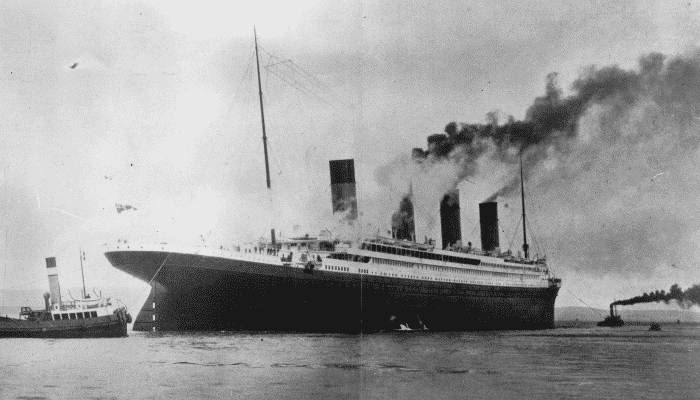
After the Industrial Revolution, with increased trade, population boom, and the advent of coal-fired steamships superseding earlier forms using huge sails or primitive mechanical means, vessels began to be widely used for other purposes. That was around the same time when ships dedicated to ferrying passengers came into being.
Serving as the major mode of intercontinental travel, passenger ships often interchangeably called merchant vessels, were predominantly instrumental in transporting passengers, postal mail, and also cargo across continental boundaries.
Black Ball Line, in the 1810s, was one of the early liner companies which provided seamless passenger travel services between the two thriving economic hubs, the United States and Britain.
Notably, at the turn of the 19th century, the Clermont, the Elise, and the SS Savannah became the first ships using post-Industrial Revolution technology in the form of steam-powered engines for large-scale operation.
Later on, vessels Royal William and S.S. Sirius created milestones as the first large passenger ships to cross the Atlantic relying on steam-powered propulsion. They were also deemed to be the first-ever ocean liners of their kind.
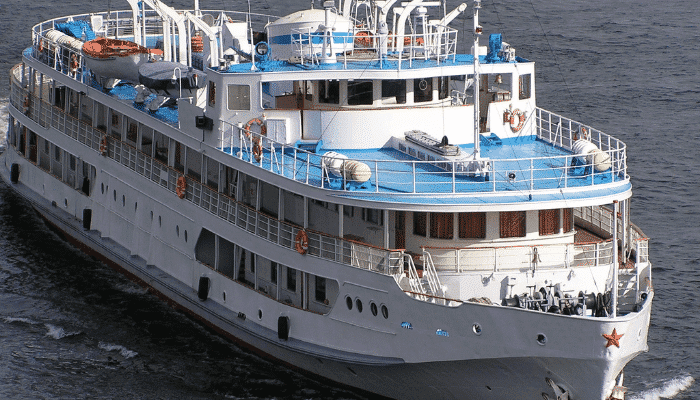
Over the next several decades, the shipping industry saw further developments in terms of improved propulsive power, speed, hulls constructed of higher breeds of iron and steel, and other technological advancements in innovative designs and technologies.
This led to the passenger shipping business reaching newer heights. Ships became bigger , safer, faster, had improved systems, more reliable builds, and also catered to enhanced passenger comfort and amenities.
Around the same time ocean liners flourished globally, the concept of ferries also came into being, though with much lesser hype. The first ferry was constructed in 1871 in Istanbul and weighed about 150 tons.
The idea gained prominence and became popularized around the world as small-sized, low-powered vessels, capable of transporting passengers and sometimes other utilities like cars round the clock across short distances along designated routes, mainly in a water body like a large lake, rivers, canals, channels, and at most, along a shoreline, harbour region or en route a nearby island of tourist attraction.
In many countries, ferries comprise a significant component of the public transport system. However, they were nowhere even close to being perceived as an alternative to ocean liners, which had been the only reliable workhorse for long-distance intercontinental travel thriving through several decades.
However, during the 20th century, the monopoly of ocean liners faced a challenge for the first time in the form of a similar rival: cruise ships or cruisers.
Unlike ferries or the ocean liners themselves, cruise vessels do not have a clear-cut timeline of origin as towards the middle of the 19th century when the passenger shipping industry with the rapid development of large and fast liners thrived as the only reliable mode of interocean transport, the concept of ferrying holiday-seekers for pleasure or recreational purposes came into limelight.
Italy, the global tourism hotspot, was the epicentre for this development when during the 1830s, they conceived the first cruising services for the elite class to various destinations. For the rest of the century, P&O and other European companies began popularizing cruise services as a new form of tourism business which garnered attention worldwide.
The ocean liner industry suffered a major blow during the First World War when the global economy suffered a great deal of damage and several of the liners in service were converted to hospitals, bunkers, troop carriers, or even destroyed due to enemy assaults.
Though again after the war, the passenger shipping services revived to some extent, the outbreak of the Second World War sired an irreversible ordeal.
After the completion of the war in the mid-20th century, with nations grappling with their losses, the advent of commercial aviation led to the start of the ocean liner trade’s demise, at a pace as rapid as its flourishment a century ago.
With advanced aircraft which could transport passengers safely across the globe in so much less time, passenger transport through ships began to be widely viewed as redundant and cumbersome. However, cruise shipping for pleasure and tourism gained prominence.
In a desperate attempt to uphold their businesses from faltering, and keeping up with the changing times, liner companies started venturing more into acquiring dedicated cruise ships or even modifying existing ocean liners to cater to enhanced passenger comfort and enjoyment, providing short-term solutions to the turbulent state of affairs.
Notably, Queen Elizabeth 2, operating under the Cunard Line, was reassigned from a transatlantic ocean liner to a cruise vessel till her retirement in 2008, after which it was further converted to a floating hotel.
It was just a matter of time when the concept of ocean liners was finally wiped out and superseded by the evolving cruise ships. As of the present day, RMS Queen Mary 2 is the only officially designated ocean liner floating in the global waters.
Difference Between Cruise Ships And Cruise Liners
Purpose and speed.
As already highlighted above, the major difference lies in their purpose. As cruise ships are dedicated to vacations and tourism, often across relatively shorter distances, they do not adhere to a strict timeline between long-distance ports A and B.
As a result, they do not require high powering like their predecessors and consequently, are designed for less speed, which in turn, is also beneficial to the liner service in terms of fuel economy. Vacationers opting for a cruise are on leisure and are paying for the duration of their stay and enjoy amenities onboard to the fullest.
This is contrary to erstwhile passengers who relied on ocean liners to reach their faraway destinations in strictly desired times or other services like mails which had to be circulated without any delay. Thus, ocean liners were designed for greater speed across long distances.
The SS United launched in 1950, was the fastest ocean liner to have been ever built, with average speeds clocking up to over 35 knots. The record has remained unsurpassed to date, with the currently existing Queen Mary 2 having an average of 30 knots.
Design and Construction
Apart from having lower rates of propulsion, cruise ships also don’t require to ply across very long distances where there is a high probability of encountering heavier sea states or very inclement weather conditions at oceans.
Firstly, cruise services are planned across holiday destinations or short round-trips where it is not feasible to have rough to severe mid-ocean conditions, aggravated by frequent weather variations.
Furthermore, the trips are scheduled only by looking into the current and short-term local weather forecasts and are often cancelled or postponed if the scenario turns unfavourable which can, in turn, worsen the sea state including wave intensities and heights.
So, it can be fair to say that cruisers do not need to be as structurally ‘robust and stronger as their forefathers. Hence, as expected, the thickness and arrangement of the hull plating and associated strengthening are lower for them.
The only ocean liner present, Queen Mary 2 has around 40% greater steel content in its hull as compared to modern, average-sized cruisers!
Other than optimizing the cost of construction, the weight expended on the structure can also be lower giving scope to augment more on passenger loads and their amenities, key elements for deadweight considerations, along with catering to various features for comfort and recreation onboard.
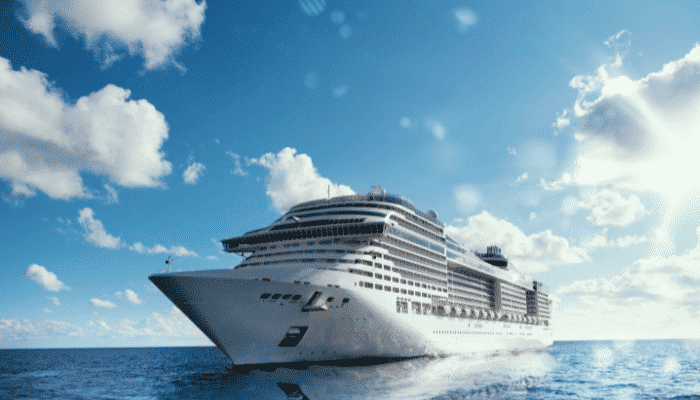
In other words, the profits in terms of the number of passengers along with their satisfaction and attraction are increased without compromising on the net displacement.
On the same lines, it can be noted that modern cruise ship designs often have wider beams, broader shoulders, and more buff forms to accommodate more passengers and related facilities, maximizing their incomes per voyage.
This is a significant departure from the previous designs of ocean liners which had a finer hull form, especially forward of midships, and was often characterized by long and sharply pointed bows to counter high modulus of waves in deep seas and reduce the effects of resistance, thus maintaining its high speed.
Early 20th-century luxury passenger vessels like Bremen, Europa, SS President Coolidge, or SS president Hoover were also incorporated with the innovative bulbous bow, now a common feature in cargo vessels.
So, because of this efficient design and often having holds to store some amount of cargo, earlier liners had a much lesser passenger-carrying capacity than their modern counterparts. As said above, maintaining voyage time irrespective of sea conditions was the highest level of priority for liners.

Moreover, from a stability point of view, since cruise ships are less likely to encounter adverse sea states, the margin for stability design is lower as compared to ocean liners. Ocean liners had a higher draft, which amounted to more stability in rough seas.
On the contrary, cruise ships, already lighter in terms of hull girder weight, have lesser drafts and a higher freeboard, which at the same time, also significantly reduces the chance of unwanted wave sprays and green water on the passenger decks and at the same time makes the vessel reach docks having low draft requirements.
Modern cruise ships often have tall superstructures extending with multiple tiers along their length, providing enhanced spaces for greater passenger accommodation and luxury and also improving on the aesthetics.
However, since passenger comfort is not to be compromised on any grounds and larger superstructures can pose plenty of problems to those on board in terms of heavy rolling or heaving motions during bad weather, designers are working hard on optimizing all the parameters in the best possible way for latest designs.
Stability , which was not very important as far as cruisers are concerned, is gaining more attention to keep pace with increasing customer demands in terms of comfort and after Costa Concordia . Features like bow stabilizers are being incorporated increasingly.
Another important point to note is that modern cruise ships with a large uniform superstructure extending much further of midships on either end have their navigation bridge closer to the bow as compared to ocean liners.
This brings us to another key distinctive feature in ocean liners which had relatively shorter superstructures with its front end much inward from the stem. So, navigation bridges of ocean liners situated on upper decks had a greater liner of sight, advantageous in rough sea conditions and reduced visibility.

Concluding..
Though aircraft are the most preferred mode of travel with an absolute monopoly, the passenger ship is here to stay. Offering state-of-the-art facilities for passengers, modern cruise vessels have attracted an increased number of passengers over time.
From luxurious hotels to casinos, swimming pools to movie theatres, health clubs to large banquet halls, amidst the serenity of the blue seas, modern passenger ships holistically serve as a perfect holiday option for many.
After the two World Wars, the COVID-19 pandemic became another massive jolt to the passenger shipping industry.
With operations suspended indefinitely, thousands stranded on board, and many vessels becoming contagion hotspots, the ordeal was huge. With stringent restrictions lifted globally, the pandemic gradually receding, and tourism witnessing a roundabout, sunnier days are once again ahead for cruise ships.
You might also like to read:
- Top 10 Largest Cruise Ships in 2022
- Top 10 Most Expensive Cruise Ships in 2022
- How Are Cruise Ships Powered?
- How Do Cruise Ships Get Fresh Water?
- 8 Ways Cruise Ships Can Cause Marine Pollution

About Author
Raunek Kantharia is a marine engineer turned maritime writer and entrepreneur. After a brief stint at the sea, he founded Marine Insight in 2010. Apart from managing Marine Insight, he also writes for a number of maritime magazines and websites.
Do you have info to share with us ? Suggest a correction


Latest Naval Arch Articles You Would Like :

Case Study: Capsizing Of Costa Concordia
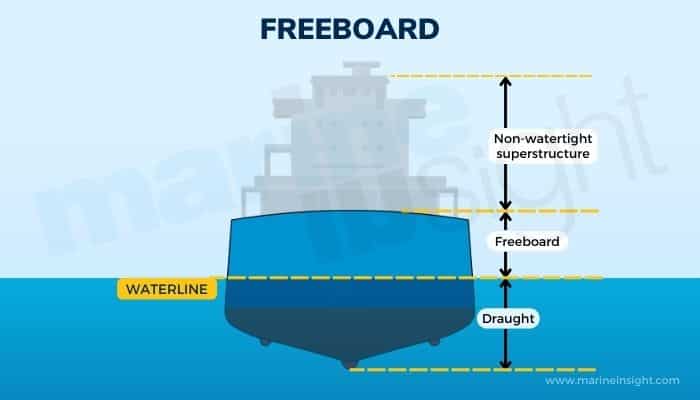
What is Freeboard on Ships?
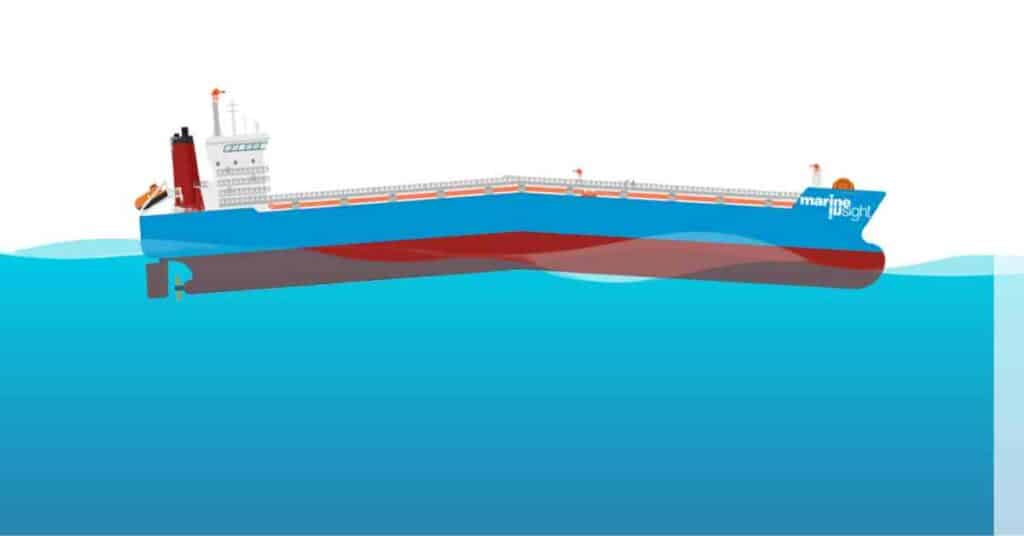
What Is Fatigue In Ships?
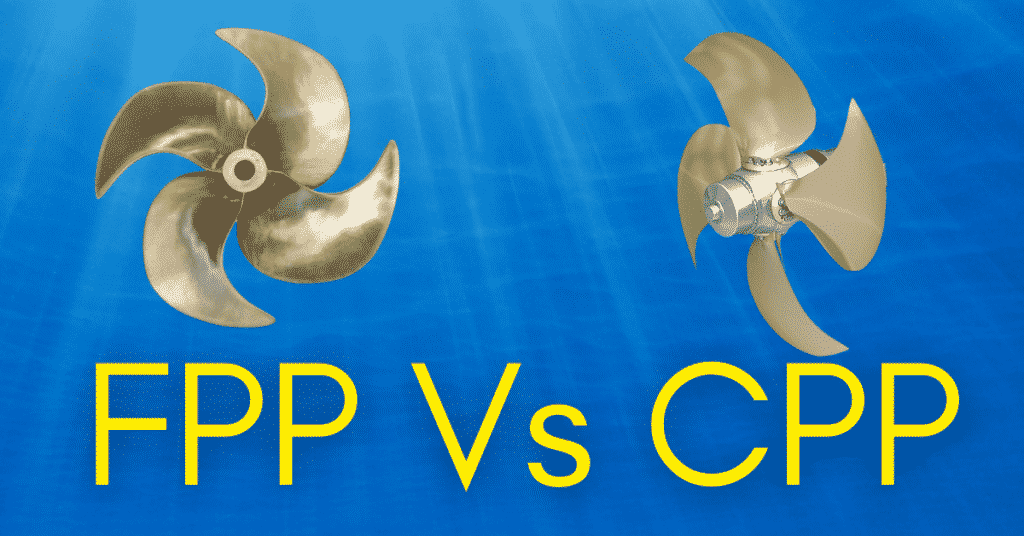
Controllable Pitch Propeller (CPP) Vs Fixed Pitch Propeller (FPP)
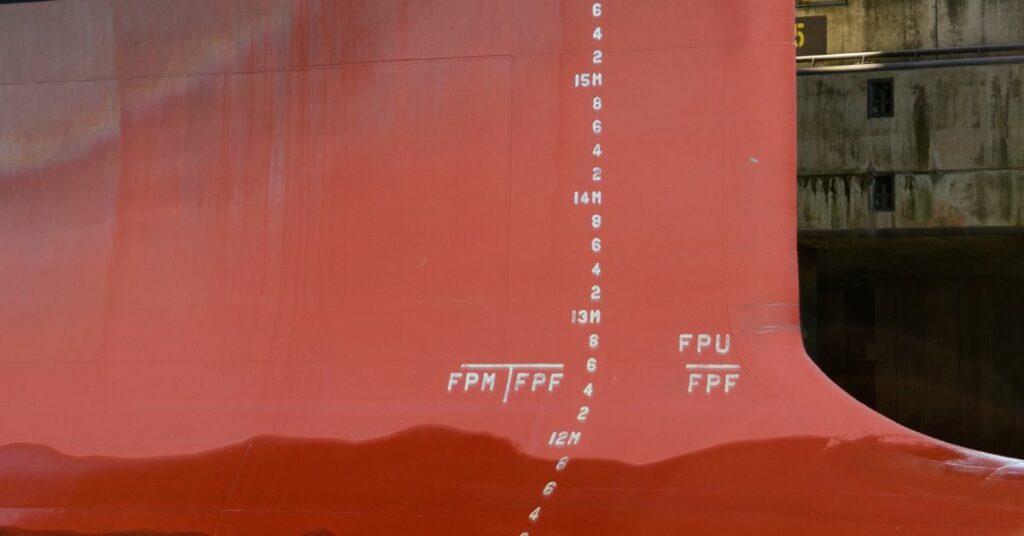
What are Draft Lines Of Vessels?
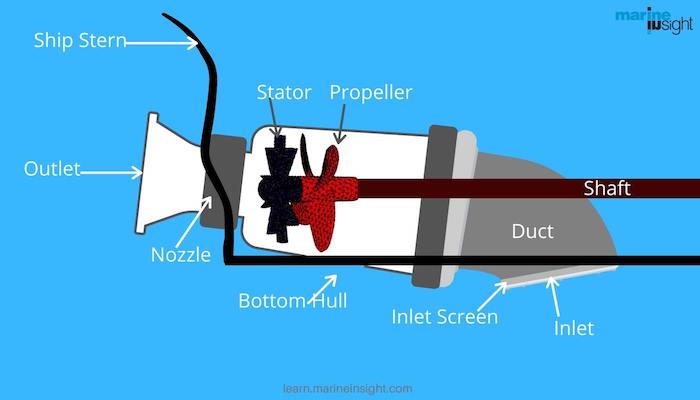
Understanding Water Jet Propulsion – Working Principle, Design And Advantages
Subscribe to our newsletters.
By subscribing, you agree to our Privacy Policy and may receive occasional deal communications; you can unsubscribe anytime.
Leave a Reply
Your email address will not be published. Required fields are marked *
Subscribe to Marine Insight Daily Newsletter
" * " indicates required fields
Marine Engineering
Marine Engine Air Compressor Marine Boiler Oily Water Separator Marine Electrical Ship Generator Ship Stabilizer
Nautical Science
Mooring Bridge Watchkeeping Ship Manoeuvring Nautical Charts Anchoring Nautical Equipment Shipboard Guidelines
Explore
Free Maritime eBooks Premium Maritime eBooks Marine Safety Financial Planning Marine Careers Maritime Law Ship Dry Dock
Shipping News Maritime Reports Videos Maritime Piracy Offshore Safety Of Life At Sea (SOLAS) MARPOL
WAIT! Did You Download 13 FREE Maritime eBooks?
Sign-up and download instantly!
We respect your privacy and take protecting it very seriously. No spam!
WAIT! Did You Download 12 FREE Maritime eBooks?
Help me choose: which Alaska Cruise is right for me?
Apr 23, 2024 • 7 min read
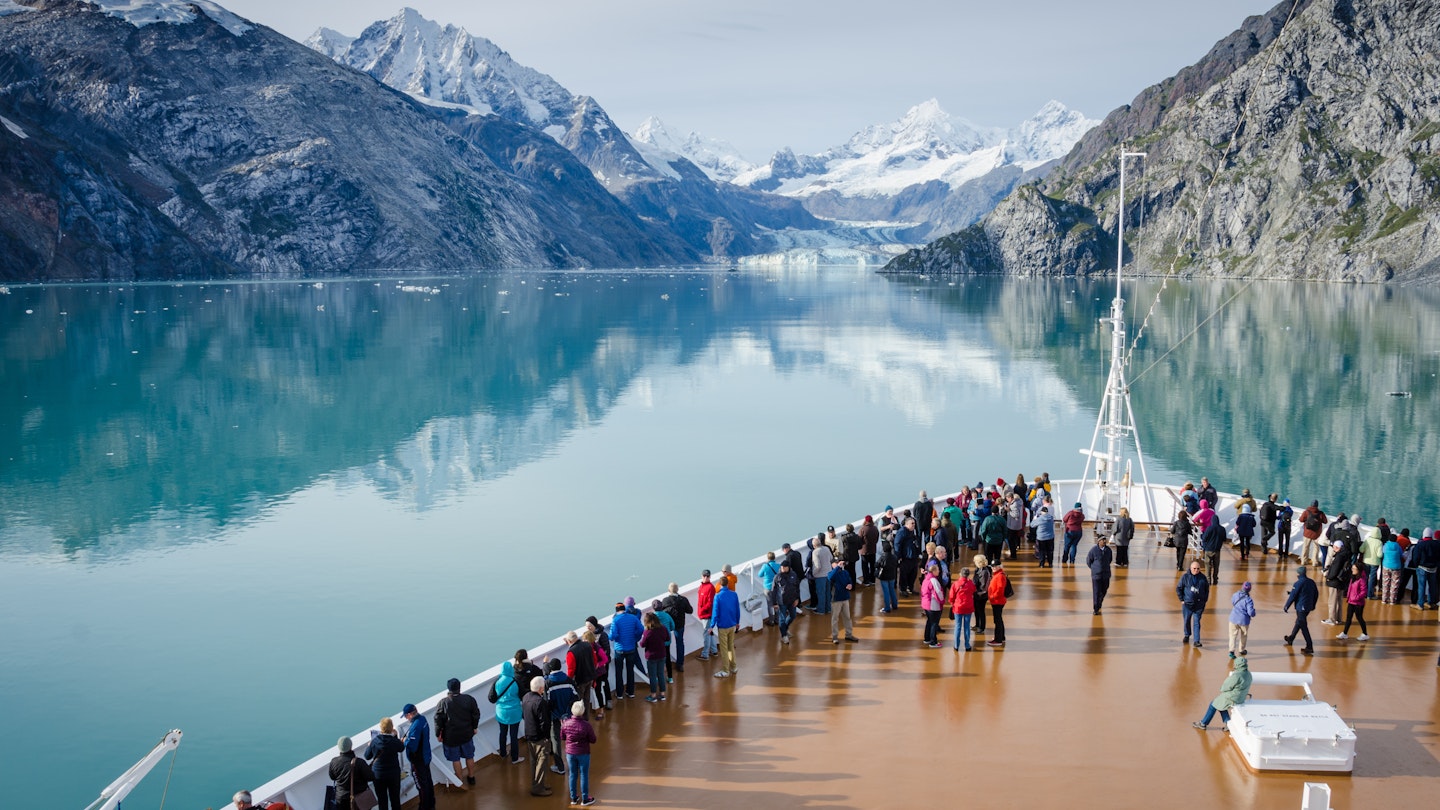
Taking to the water is a wonderful way to see Alaska's incredible coastline © Bala Sivakumar / Getty Images
Alaska's impressive southern coastlines contain hordes of island archipelagos, deep fjords and ancient glaciers. Nearly all of the area is roadless, so seafaring vessels, including cruise ships, are a popular way for visitors to experience these pristine areas.
Large cruise companies sail Alaska's Inside Passage from Seattle , Washington and Vancouver , and on through the Gulf of Alaska to Seward or Whittier. In between, passengers usually stop in Ketchikan , Juneau and Skagway , and then sail up College Fjord to see glaciers stretching their icy fingers into the sea. You'll see plenty of stunning scenery along the way but not up close – for most cruisers, it's more than enough to satisfy.
Smaller cruises max out at around 200 passengers and can nose into Southeast Alaska's nooks and crannies, launching skiffs and kayaks from their lower decks for an immersive shore visit full of exploration. These vessels may not stop in local ports, instead anchoring at night and offering guests the chance to hike a remote shoreline, whale-watch from a kayak or attend a presentation by indigenous artisans. If any ports are visited, they're likely to be smaller communities like Wrangell, Sitka, Petersburg and Yakutat.
Additionally, with the Northwest Passage now open to marine traffic, the northwestern city of Nome is a regular port of call for higher-end, midsize cruise lines to expose passengers to the rural reaches of coastal Alaska. The Aleutian Island city of Unalaska is also on some boutique cruise line itineraries, so check carefully that the region that sparks your interest.
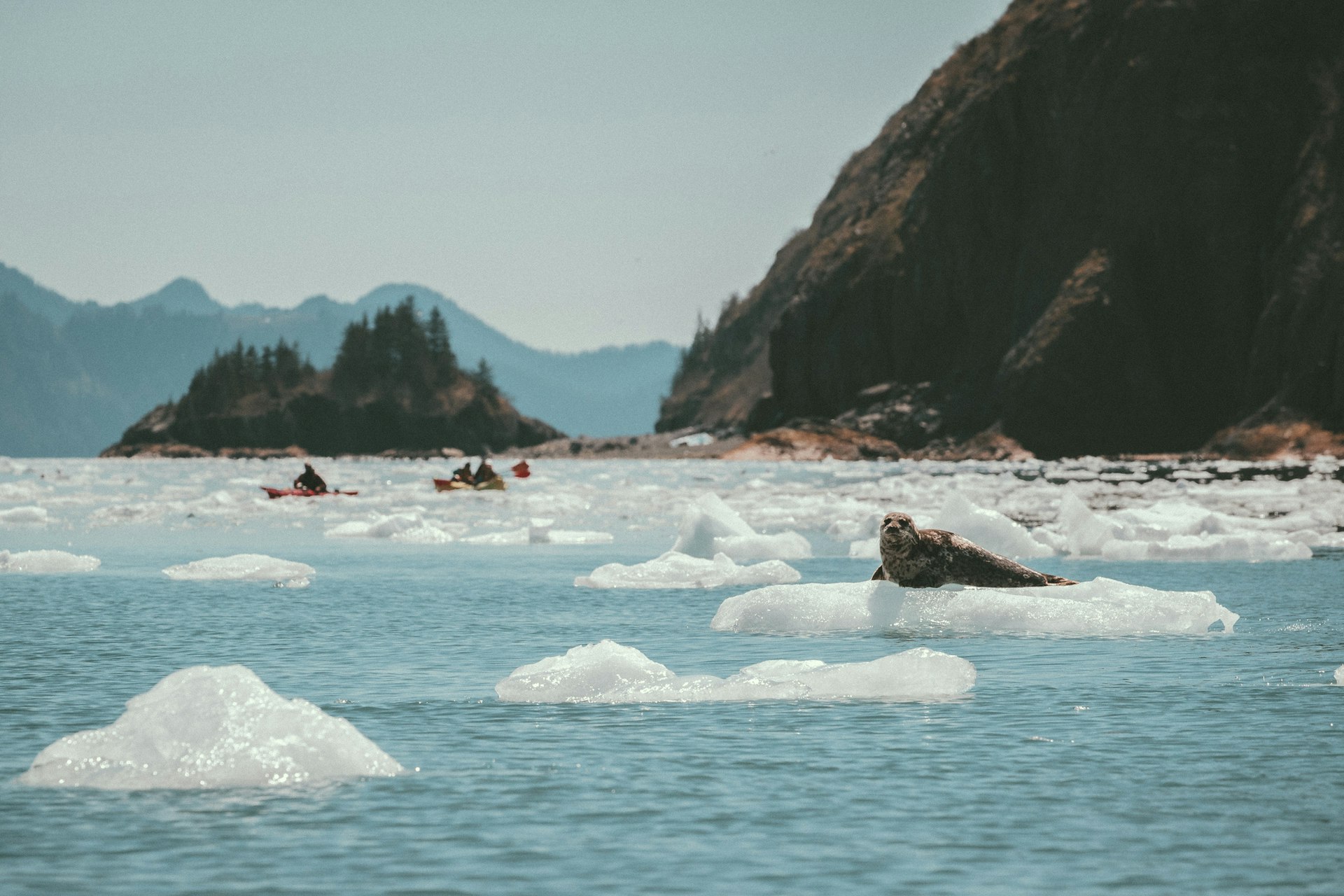
Which part of Alaska should I choose to cruise?
For an overview of Alaska The standard Inside Passage cruise between Vancouver or Seattle and Seward or Whittier is an excellent choice, boasting beautiful scenery and the chance to experience a route taken by steamships of the late 1800s. You’ll get a snapshot of the Tongass National Forest , glaciers and the occasional whale or bear, but not up close unless you’re on a specific shore excursion. Holland America, Cunard and Viking all have cruises that fit this itinerary.
Taking a deep dive into Alaska’s coastal regions Book a small ship cruise between Sitka, Ketchikan, and Juneau for a week or longer in the nooks and crannies of southeast Alaska. You’ll hike where there are no trails, paddle without another human in sight, and get to know the traditional lands of Alaska’s Coastal Native tribes. We like Alaskan Dream Cruises, UnCruise Adventures and Lindblad Expeditions for smaller, more sustainable cruises.
To discover Alaska’s rich history You can’t skip Ketchikan, Juneau or Skagway on an itinerary. Juneau is the state capital and a former mining community. Ketchikan once was a major player in the timber industry and has a sordid past steeped in bootlegging and brothels. Skagway was a jumping-off point for the Klondike Gold Rush beyond Chilkoot Pass and has an old railroad to prove it. All three cities are often on large ship itineraries.
Explore Alaska’s most remote coastal areas Consider a luxury midsize (or smaller) cruise to places like Dutch Harbor in the Aleutian Islands or to the northwestern city of Nome. Both combine a look at the rugged, raw coastlines with time spent on shore in towns with few frills. Weather can often be cold, rainy and windy, but if you want a unique adventure in Alaska, check out the itineraries from Hurtigruten.
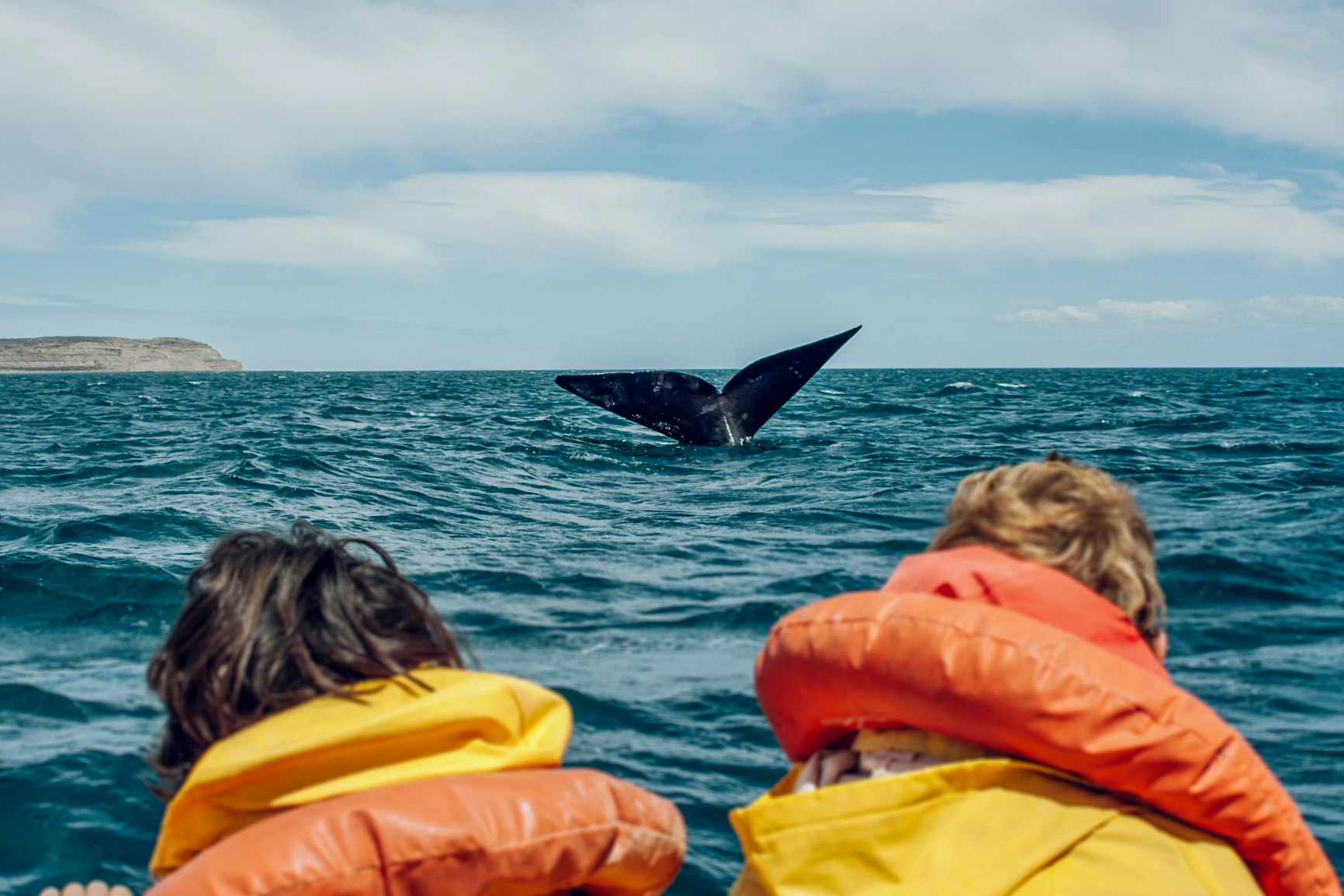
When should I go?
Depending on the cruise line, sailings begin in late April and continue through to early October. The most dependable weather typically appears in July and August, but that's also the most popular (and expensive) time; pick a trip earlier or later in the season for cheaper passage and shore excursions.
For spring and fall passengers, know that temperatures will be cooler than you might expect and variable types of precipitation, including snow showers, aren't unusual. In the summer, it's still cool on deck and near glaciers, so don't expect a lot of outdoor pool time or sunbathing on board.
If spotting wildlife is a priority, consider cruising during the salmon runs, when bears are most active and can be spotted from the decks of the ship. Humpback whales often follow schools of herring and other small fish during the summer and can be seen anytime between May and September before they migrate to Hawaii or Mexico .
How do I know my cruise line is operating sustainably?
While all travel has environmental and cultural impacts, cruising leaves its mark to varying degrees on Alaska's fragile ecosystems. The average large cruise ship can have a carbon footprint greater than 12,000 cars and produce up to a ton of trash each day. While there can be a positive economic impact on ports of call, a small community visited by 15,000 people per day during sailing season can intrinsically change.
The industry's trade group Cruise Line International Association (CLIA) touts a desire for "conscious cruising." They have guidelines for water conservation and upgrades to heating, air-conditioning and ventilation, with a goal for ships to be net zero by 2050. There is also a focus on respecting the cultural traditions of destinations through cooperative regenerative tourism that preserves a community's unique history, culture and values.

What kinds of activities can we experience?
Onshore activities differ depending on the size and style of the cruise. Traditional excursions are created to fit a specific number of people, all of whom come from the ships and are expected to be in port for a specific time. They provide an overview of Alaska's history, culture, recreation and industry, and don't offer much of a personal touch.
Smaller boutique cruises strive to immerse their guests in the wild Alaska they've researched and desire to experience. Trips to shore rarely involve large port cities except for embarking and disembarking – instead, they drop kayaks in the water from the ship or use a rubber skiff to reach a deserted shoreline for a hike. The communities they visit are usually smaller, like Petersburg, Wrangell or Haines.
- Glacier & Wildlife Tours: Cruise for a few hours aboard a smaller vessel to witness whales, otters, seals and icy glaciers.
- Dogsledding: Learn about mushing, huskies and the operations of sled-dog kennels before taking a spin behind a team.
- ATV Adventuring: Rev up for a wilderness or tundra tour aboard a four-wheeler or side-by-side vehicle.
- Flightseeing: Take a unique peek at Alaska's landscapes from above, spotting wildlife, and ogling glaciers and mountain ranges.
- Alaska Native Traditions: Learn the ways of Alaska's many tribal groups, with dancing, drumming and art displays as part of the program.
- Ride a Historic Train: Skagway's White Pass Yukon Railroad climbs over Chilkoot Pass for a hands-on gold-rush history tour.
- Paddle Power: Hop in a raft or kayak and explore Alaska's beautiful coastlines and rivers.
Need-to-know before you go
Plan for wet weather Alaska’s southeastern region is part of a rainforest, where wet conditions are the norm even in summer. Bring waterproof rain gear, sturdy shoes, a hat and gloves to stay warm and dry.
Know your physical limits If mobility or other health issues may affect your ability to enjoy a cruise to the fullest, consider traveling with a larger operator. These companies are well-versed in accessibility and have made accommodations for those with mobility needs. Smaller ships are full of trip hazards and watertight door jambs and require bending and stepping up or down to access activities like kayaking or skiff rides.
Plan your own shoreside activities There is no requirement to book excursions or activities through the cruise line. If a more independent style of exploration is your thing, feel free to do your own research ahead of time or visit each port of call’s visitor bureau upon arrival. Just be sure to adhere strictly to the ship’s boarding time.
Look to shoulder season sailings Not only will you often receive a significant discount, you’ll also be able to witness Alaska’s seasonal transitions and fewer crowds at ports of call.
Know what "all-inclusive" really means: Drill down into the details of your cruise and ask questions about meals, alcoholic beverages, activities and shore trips. It may be that a smaller cruise line will include everything at one price.
Explore related stories

National Parks
May 1, 2024 • 12 min read
Choose your adventure in one of Alaska's epic national parks – here's the lowdown on all eight.
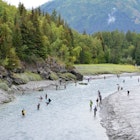
Apr 24, 2024 • 7 min read

Apr 22, 2024 • 6 min read

Apr 19, 2024 • 10 min read

Apr 18, 2024 • 7 min read

Apr 15, 2024 • 12 min read

Apr 6, 2024 • 9 min read

Apr 5, 2024 • 6 min read

Apr 4, 2024 • 7 min read
- CruiseMapper
- Ships and Lines
Cruise Ship Size Comparison, Dimensions
Compare cruise ship sizes by length, weight (tonnage), height, width/beam. Review cruise ship dimensions in both meters and feet, and FAQ information, definitions.
Cruise ship size comparison
In our huge table below there's a list of all most famous, ever best passenger cruise ships sorted by name. This survey also offers smaller cruise ships size comparison of top luxury all-inclusive vessels with gross tonnage even lesser than 5,000 GT. Now the list of all ship sizes related and integrated articles:
- passenger capacity of cruise ships
- cruise ships cost
- newest cruise ships (on order/under construction)
- list of the biggest cruise ships of the world
- world's largest cruiseship building companies
- cruise line companies list
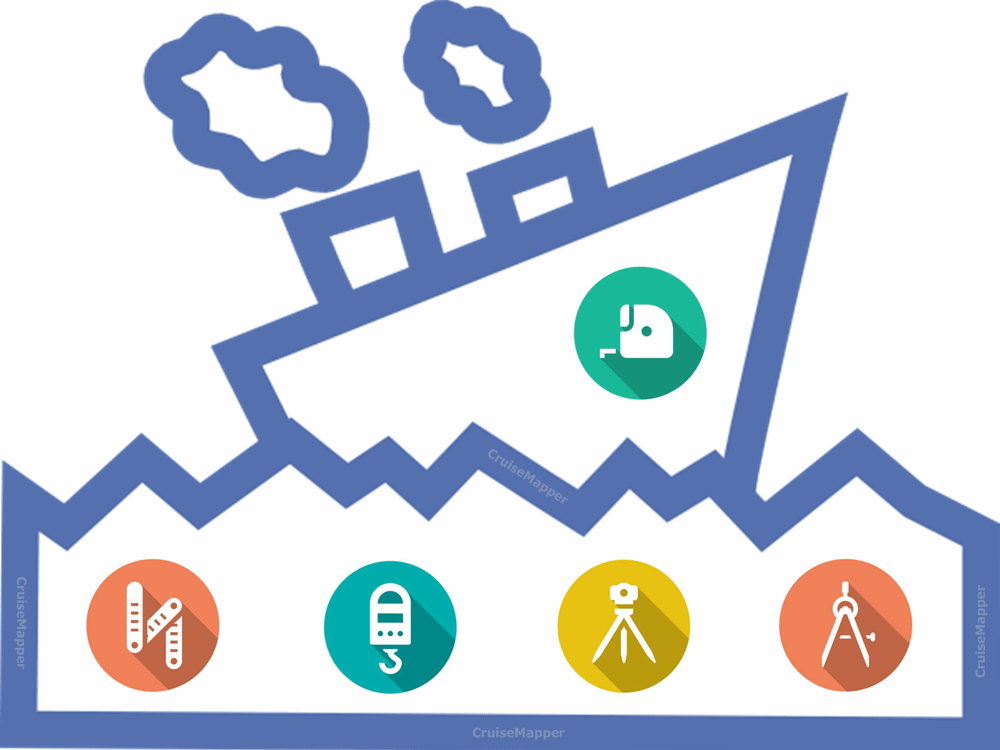
Length of a cruise ship (Length Overall / LOA)
The cruise ship length is professionally referred to as LOA (length overall), meaning the maximum length between the two most distant points on its hull. LOA may also include the tip of the bowsprit - the pole extending from the ship's prow (usually on tall sailing ships, yachts, and smaller boats). The bowsprit is the "winning" part of the ship when competing in a race or during trials/speed tests.
Another passenger cruise ship length measuring (though not included in this survey) is called LWL. LWL signifies "loaded waterline length" (or just "waterline length"). It excludes the total length, denoting only the length at the point where the vessel sits in the water. The LWL measure plays an important role when assessing some ship properties, like "hull speed" (aka "displacement speed"), water displacement, the amount of paint needed for the ship's bottom, etc.
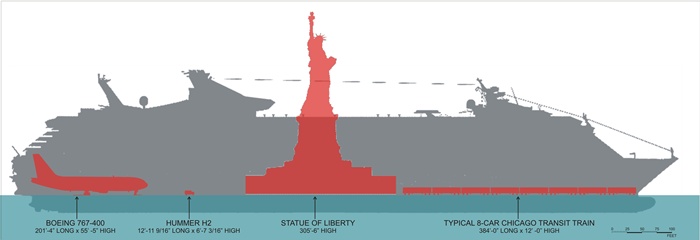
Longest cruise ship in the world
The longest cruise ships by size also occupy the first two positions in the list of the largest cruise ships of the world by passenger capacity and gross tonnage. The humongous Royal Caribbean's floating cities Allure and Oasis boast the whole 360 meters in length (1,181 ft), and breadth of 47 meters (154 ft), the unbelievable for a passenger cruise ship tonnage of 225,300 tons, and max crew-passenger capacity of almost 8,500 (2,170+6,300) - each!
Weight of a cruise ship (tonnage) and draft
The size (tonnage weight) of a cruise ship is measured in "gross tonnage" (GT). It relates to the vessel's internal volume (keel to funnel* and to the outside of the hull) and applying a mathematical formula. The cruise ship tonnage is generally used for determining registration fees, port fees, safety rules, regulations. Another ship data (though not included in this survey) is the vessel's "deadweight tonnage" (DWT), which is the weight a vessel can safely carry (cargo, passengers, etc).
The cruise ship draft (or draught) measures the number of meters/feet from the waterline to the lowest point of the keel - or the ship's "invisible" portion below the surface (and especially when loaded). The cruise ship's draft is very important when considering docking in a particular port, sailing through channels or the inland waterways of the continents (rivers and canals).
*Note: Actually, the ship's funnel is the only part of the enclosed interior space that is NOT included in its Gross Tonnage measurement.
Cruise ship weight
As one of our fans Mr John Spooner (cruiser / Retired Master Mariner) have pointed out, the "Gross Tonnage" weight is a measurement of VOLUME, and not of MASS. GT is an index related to marine vessels' overall internal volume. According to Wikipedia's definition:
- "Gross Tonnage" (GT) calculations are based on the volume of all the ship's enclosed spaces.
- "Gross Register Tonnage" (GRT) is the vessel's total internal volume measured in "register tons" (each ton equals 100 ft3 / 2,83 m3).
- Neither GT nor GTR measures the vessel's displacement (mass), but really show how big cruise ships are.
- "Deadweight Tonnage" (DWT) measures how much weight a cruise ship (or any of the marine vessel types) can carry safely. This a weighted sum of the vessel's cargo (incl provisions, passengers, crew), fuel, water (fresh and ballast), etc.
- "Displacement Tonnage" is how much weight the water that a cruise ship (any vessel) displaces when floating (the total weight of the ship / including its contents). Displacement is usually applied to the navy rather than commercial marine vessels. It is measured when the ship is loaded at full capacity.
Compare cruise ship sizes

Yacht vs Cruise Ship: Key Differences Explained
Many travelers look at luxury yacht rentals and cruise ships when planning a vacation at sea. But there are some major distinctions between these two options. Understanding the key differences can help you choose the best one to suit your needs and expectations.
Size and Capacity
The most obvious difference is size and guest capacity. Cruise ships are massive, housing 2000-6000 passengers.
Even small ships carry 600+ people. In contrast, chartered yachts max out around 12 guests, with typical capacities of 6-10. The intimate scale ensures an exclusive escape.
Itineraries and Flexibility
Cruises sail along fixed routes and strict schedules, whereas yacht charters offer total itinerary flexibility. Craft your own custom route with a captain. Spend more time in spots you love and bypass others. The only fixed elements are your start/end ports.
Onboard Experience
The onboard ambiance varies dramatically between the two. Cruise ships feel like floating cities with crowds everywhere. You’ll share amenities with thousands of fellow passengers. Chartered yachts provide a private, peaceful retreat catered to you. No queues or sharing.
Activities and Entertainment
Both offer plenty of amenities, but the vibe is different. Cruises offer fun activities like casinos and shows, while yachts provide relaxation and adventures like snorkeling and fishing. The choice depends on your interests.
Service and Cuisine
With thousands of guests, cruise staff and dining cannot provide truly personalized service. You get more staff interaction on a yacht, including a captain dedicated to your charter. Included in the experience is fine dining with customized menus and premium alcohol.
For an exclusive getaway on your terms, a private yacht charter reigns supreme. But mass market cruises suit travelers who enjoy crowds and scripted entertainment. Evaluate your priorities to choose the best seafaring vacation.
Booking and Costs
Booking a cruise is relatively simple through major cruise lines or agencies, while yacht charters require researching reputable brokers and charter companies, of which there are many. Cruise fares per person are lower, but a fully crewed yacht divided among guests can still be competitive. Keep costs variable by booking a bareboat yacht charter.
Destinations and Departure Ports
Cruise ships certainly provide a wide variety of itineraries, but their large size limits them to major cruise ports. Yachts can access small coves, secluded islands, and exotic locales that mega-ships can’t reach. Many more departure ports are accessible for yacht charters too.
Onboard Accommodations
Staterooms on a cruise provide basic comfort, often with an ocean view. Yachts feature lavish staterooms and master suites with hotel-style amenities. You’ll get complete privacy, often with en-suite bathrooms. Some large charter yachts rival small boutique hotels in luxury. .
Health and Safety
Mass gatherings on cruises can enable the rapid spread of illnesses like COVID or norovirus. Yachts provide isolation from crowds and allow immunocompromised guests to vacation safely. Strict protocols keep private yachts disinfected, and both options mandate safety drills and procedures.

Read Our Billfish Policy

Our Crews Prefer

What is a cabin steward on a cruise? Learn about the people who keep your room clean

One of the best parts of a cruise is that you don't have to worry about dusting, vacuuming, scrubbing or otherwise lifting a finger to clean during your vacation. That's due, in large part, to your room steward, also known as a cabin steward or cabin attendant. These cruise line employees make sure your cabin stays tidy throughout your sailing.
What else should you know about your cruise cabin steward? In this piece, I'll lay out their duties, what you can (and can't) ask them to do and what sets them apart from the folks who straighten up your room at a hotel or resort.
For more cruise news, guides and tips, sign up for TPG's cruise newsletter .
Room steward duties
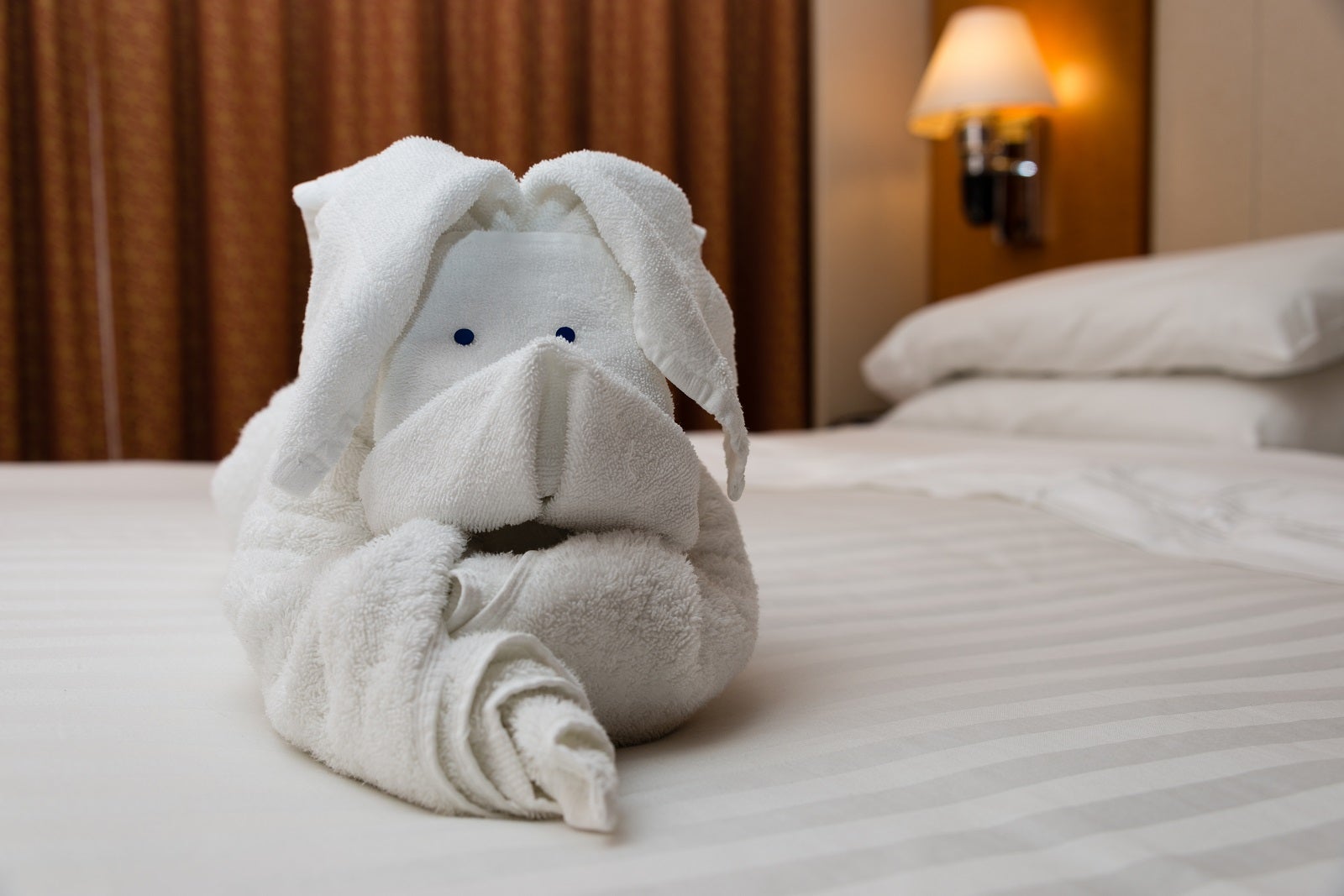
In addition to cleaning and sanitizing your room and bathroom before you embark, your cabin steward is also responsible for tidying and cleaning your cabin during your cruise.
Many cruise lines offer twice-a-day service in each cabin. That means you can expect your room steward to come in sometime between breakfast and lunch to make up the beds, remove any used glasses or room service trays and provide fresh towels and toiletry refills when necessary.
They'll also pay visits to your stateroom at night, likely while you're at dinner, to provide turndown service, which sometimes includes treats like pillow chocolates and towel animals. On lines that still provide paper printouts, your steward's nightly duties will also include leaving copies of the next day's activity schedule, as well as dinner invitations, shore excursion tickets and flyers for events like art auctions and spa tours.
However, there are exceptions. Several major cruise lines — including Royal Caribbean , Norwegian Cruise Line and Carnival Cruise Line — have cut back to once-a-day room cleaning in order to trim costs. On those lines' ships, passengers can expect room straightening once per day.
If you don't want your cabin steward to enter your room, put the provided "do not disturb" magnet or hanging sign on your door. Some newer ships have buttons for you to push instead; these activate lights outside to tell the room steward you'd like some privacy. I do this when napping or getting ready for dinner.
As for their other tasks, room stewards are responsible for collecting clothing that passengers wish to have laundered, dry-cleaned or pressed (for a fee); restocking each cabin's minibar; and fielding requests for things like extra bedding or hangers.
What a cabin steward can (and can't) do for you
Keep in mind that a room steward is not a butler. While they can refill your ice bucket, show you how to work your TV and climate control, provide you with child-size life jackets and fold the pajamas you left strewn around the room when you ventured out for morning trivia, they won't be able to honor specific requests outside the scope of keeping your room spotless.
Here's some of what you can expect your cabin attendant to do:
- Introduce themselves to you on the first day or two of the sailing
- Deliver your checked luggage to your room after you board the ship
- Remove dirty dishes, cups and room service items from your cabin
- Straighten up and tidy your room (vacuum, wipe up spills, fix beds and generally organize)
- Remove dirty towels and provide new ones
- Change your bedsheets (if requested)
- Set up sleeping arrangements (splitting beds, combining beds and pulling down bunks)
- Refill complimentary shower gel, shampoo, conditioner and lotion
- Restock tissues and toilet paper
- Deliver daily schedules and other paper announcements
- Answer general questions or point you to the person who has answers if they don't
- Alert maintenance if something goes wrong with things like plumbing or electrical in your cabin
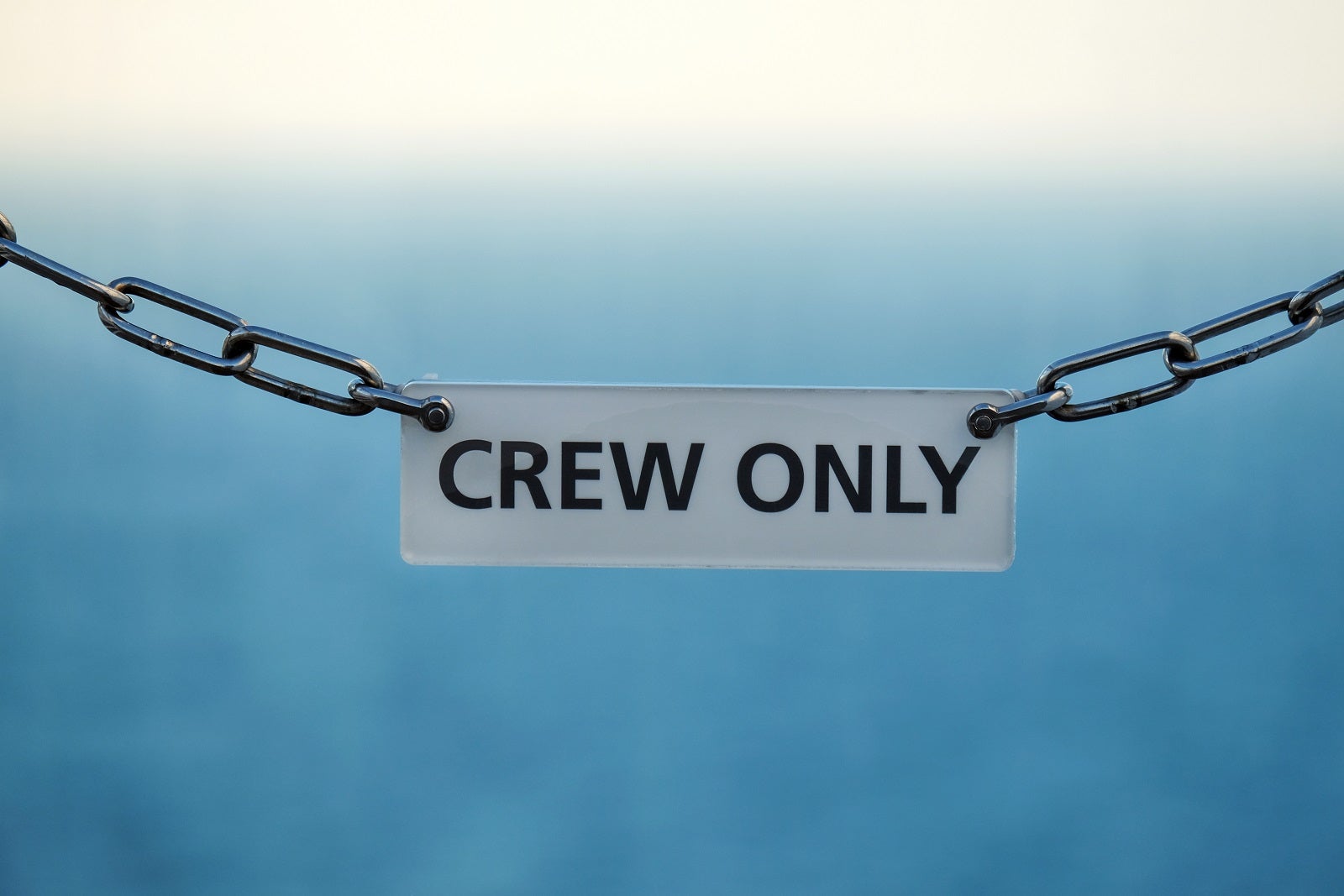
They won't be able to do the following:
- Answer questions related to your onboard bill
- Schedule shore excursions, dinner reservations or spa treatments for you
- Take room service orders
- Help you unpack or repack
- Offer assistive services if you have mobility issues
- Babysit your kids
- Hang out with you during your cruise
- Show you the crew quarters
To address the first few items on the second list, you'll have to call guest services, the shore excursions desk or the spa from your cabin, or visit in person. Sometimes, you can also make these reservations on your cruise line's mobile app . If you're booked in an expensive suite that includes the services of a concierge , you'll have the option to book through them as well.
For room service , you'll have to call your ship's dedicated room service number, which is often noted on your cabin's phone. For help packing and unpacking, employ the services of a butler if you're staying in high-level accommodations. Otherwise, you're on your own.
How room stewards differ from hotel housekeepers
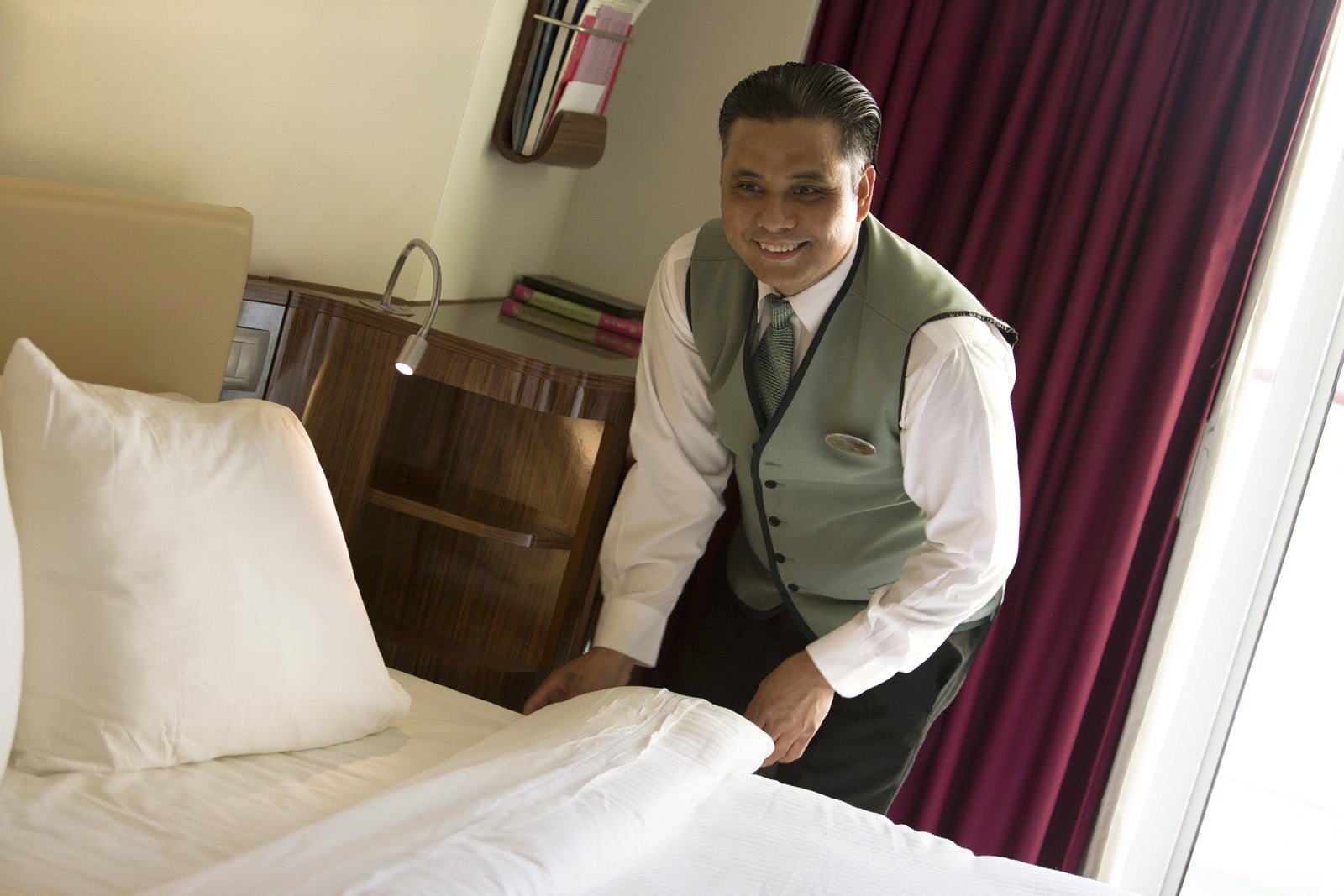
Although a cruise cabin steward is similar to a housekeeper who would service your room at a hotel, there's one major difference: You're likely to actually meet your room steward and, possibly, even get to know them. They will almost always knock on your door on embarkation day to introduce themselves and their team (if they aren't working alone), explain the particulars of your room and ask if there's anything you need.
It's also common for them to greet you by name when they pass you in the hallway and ask about your day.
In addition to knowing your name and the names of those traveling with you, cabin attendants have a tremendous knack for remembering special requests. Would you like a daily refill of your ice bucket? Do you prefer only one pillow chocolate instead of two? Do you want a printed copy of the daily schedule even though your cruise line only offers them on request? Do you need four washcloths instead of two? Ask your room steward.
Service on a cruise is far more personalized than what you'll receive at a standard hotel. For that reason, it's customary (except on luxury cruises where gratuities are included) to tip your room steward for a job well done. Most cruise lines charge a per-passenger daily service fee that covers the cost, but many passengers choose to leave extra in cash at the end of their sailing if they feel their cabin attendant has gone above and beyond.
Planning a cruise? Start with these stories:
- The 5 most desirable cabin locations on any cruise ship
- The 8 worst cabin locations on any cruise ship
- The ultimate guide to what to pack for a cruise
- A quick guide to the most popular cruise lines
- 21 tips and tricks that will make your cruise go smoothly
- 15 ways cruisers waste money
- The ultimate guide to choosing a cruise ship cabin
Nearly 200 people sick in norovirus outbreaks on Royal Caribbean, Princess Cruises ships

Nearly 200 people got sick in norovirus outbreaks on Princess Cruises and Royal Caribbean International ships.
The Centers for Disease Control and Prevention said 94 of the 2,532 guests on Sapphire Princess reported being ill during its April 5 cruise, along with 20 crew members. The round-trip cruise, which left from Los Angeles with stops in Hawaii and the South Pacific, will end on May 7, according to CruiseMapper .
On Royal Caribbean’s Radiance of the Seas, 67 of its 1,993 guests reported being ill in addition to two crew members during a cruise that ended April 22, according to the CDC . The two-week voyage sailed from Tampa, Florida to Los Angeles with stops in countries like Colombia and Panama, according to CruiseMapper .
In both outbreaks, the guests and crew members’ main symptoms were diarrhea and vomiting.
Princess, Royal Caribbean and the ships’ crews implemented heightened cleaning and disinfection measures and isolated those who were sick, among other steps, the health agency said.
"Onboard the most current sailing of Sapphire Princess, there have been a small number of cases of mild gastrointestinal illness among passengers, the cause likely is the common but contagious virus called Norovirus," a Princess spokesperson told USA TODAY in an emailed statement. "At the first sign of an increase in the numbers of passengers reporting to the medical center with gastrointestinal illness, we immediately initiated additional enhanced sanitization procedures to interrupt the person-to-person spread of this virus. Our sanitization program, developed in coordination with the CDC, includes disinfection measures, isolation of ill passengers and communication to passengers about steps they can take to stay well while onboard."
Royal Caribbean did not immediately respond to a request for comment.
The CDC has logged six outbreaks of gastrointestinal illness on cruise ships that met its threshold for public notification since the beginning of the year. Norovirus was listed as the causative agent in five, while one was unknown.
The illness is often associated with cruise ships but outbreaks occur in communities on land as well, according to Dr. Sarah E. Hochman, a hospital epidemiologist and the section chief of infectious diseases at NYU Langone Health’s Tisch Hospital.
“There's not something special or unique about cruise ships,” she said. “It's really any type of congregate setting, but it's also happening out in the community on a much smaller scale among households and household contacts. It just doesn't come to the attention of public health as much as it does for larger congregate settings.”
Hochman said the virus is “incredibly infectious” and congregate settings tend to have many shared surfaces, such as handrails in cruise ship stairwells or elevators. “And so, if you just have one person who's shedding the virus and touches the surface and then someone else touches it and then touches their mouth, that's how it can spread in those types of settings.”
Cruise ship medical facilities: What happens if you get sick or injured (or bitten by a monkey)
Alcohol-based hand sanitizer isn't as effective against norovirus, and Hochman emphasized that washing hands with soap and water “will do a lot to prevent the spread.”
The news comes after more than two dozen Silversea Cruises guests got sick in a gastrointestinal illness outbreak on the luxury line’s Silver Nova ship during a sailing that began in late March.
Nathan Diller is a consumer travel reporter for USA TODAY based in Nashville. You can reach him at [email protected].
I went on 2 of Royal Caribbean's largest and newest cruise ships. I enjoyed them, but they're not for everyone.
- I've sailed on Royal Caribbean's largest cruise ships , Wonder of the Seas and Icon of the Seas.
- Both megaships are jam-packed with people, amenities, and dining options.
- But if you want a quiet cruise to unique destinations, they might not be for you.

Before booking a vacation at sea, travelers should always research the best cruise line and ship for their needs.
If you're looking for a cheap and fast trip, try Margaritaville at Sea . Craving something more upscale? Consider Oceania Cruises.
But if you're looking for high-end sailing to unique destinations, I'd suggest avoiding Royal Caribbean's megaships .
Royal Caribbean has become synonymous with giant, family-friendly cruise ships
By 2028, Royal Caribbean wants one-third of its fleet to be megaships.
The latest addition, the 1,196-foot-long and 248,663-gross-ton Icon of the Seas, entered service in January, unseating Wonder of the Seas as the world's largest cruise liner.
Together, the two vessels can fit over 19,000 people — about 4,500 crew and 14,500 guests. Each ship has eight neighborhoods and there are 29 bars and 48 eateries between them.
I've attended complimentary sailings on both Wonder and Icon, the longest of which was three nights on the latter. From their colorful pool decks to the inescapable crowds, as a solo-adult traveler, I was equal parts entertained, overwhelmed, and overstimulated.
Related stories
But admittedly, I had fun. I do love a good waterslide; Wonder has three of them and Icon has six.
If you want to go on a cruise with your children — and if they, like me, love activities like rock climbing and mini golf — Royal Caribbean's megaships could be your best option.
Wonder and Icon are jam-packed with activity spaces like ice-skating rinks and ziplines.
But don't expect a peaceful retreat. The rowdy, bar-hopping adults and screaming children at the water playground aren't conducive to a relaxing vacation.
Megavessels might not be for you if you want a quiet cruise
If you want a relaxing vacation — maybe one that doesn't involve crowds of children — you shouldn't stay on either Royal Caribbean yacht.
There are many ways to have a luxury vacation on Icon of the Seas . But unless you want to pay for upcharged amenities at every turn, you'd be better off spending more upfront to reserve a premium cruise line — especially if you're interested in cruising for the destinations, not the ships.
After all, like most of Royal Caribbean's largest vessels, Icon and Wonder exclusively sail in the Caribbean.
Some destinations, such as French Polynesia, have set restrictions on which cruises can travel there amid concerns about pollution and overcrowding.
If stopping at these ports — or, really, anywhere outside the Caribbean — is at the top of your vacation wish list, you'll have to travel on a smaller Royal Caribbean ship or go with a different cruise line like Oceania , Silversea, and Regent Seven Seas.
You might not get a waterpark, but you'll get a quieter vacation to locations no megaship will likely be allowed to visit.
Watch: Inside the world's biggest cruise ship that just set sail
- Main content

IMAGES
VIDEO
COMMENTS
5. Cost of the fare. Understandably, a ferry and a cruise do not cost the same amount. With a ferry you're paying for a lot less - cruises include a wealth of food options, larger accommodations, and much more entertainment. A one-night ferry journey from Dublin, Ireland to Cherbourg, France will cost around £70.
On cruise ships, guests have much more space per person as they need a cabin, places to eat, and relax. On ferries, guests are usually just sat together and don't need much room. Ferries also don't need anywhere near as many crew members onboard as cruise ships do. A typical ratio on a cruise ship is 1 crew member to every 3 passengers.
The size is also a difference: Cruise ships are typically much larger than ferries, with more cabins and facilities to accommodate a larger number of passengers. Ferries are generally smaller and more compact, designed for shorter journeys with fewer passengers. You can also see this on the featured image of this article.
They're equipped with powerful engines that allow them to reach higher speeds than traditional ferries. These ferries often have a sleeker design and offer a more streamlined experience. While ferries and cruise ships are both maritime vessels, there are significant differences between them. Cruise ships are generally larger and more ...
Ships typically have multiple decks, while cruises usually have one or two decks. Cruise and ship are two terms that are often used interchangeably, but there are important differences between the two. Cruise ships are generally larger and more luxurious than regular ships. Cruise ships have a variety of amenities, such as casinos, spas, live ...
While cruise ships are built for comfort and entertainment, providing a wide range of amenities like pools, spas, and entertainment shows. While ferries operate on regular schedules, similar to buses or trains, and are crucial for daily commuting in many regions, cruise ships embark on longer voyages that can last from a few days to several ...
Here are my recommendations based on my personal cruise experiences with some of the world's most popular cruise lines. How we chose these cruise lines: Read our methodology for selecting family cruise vacations. 1. Disney Cruise Line. Disney Cruise Line (DCL) pioneered the concept of family-friendly cruises.
Our Cruise Ship Comparison Tool will let you see the differences between two ships. We did all the research to make it easy for you. Look at the differences in size, number of guests, types of food, and various activities. We also help you compare how much is included so you know how much you might end up spending on board.
1. River Ships are Smaller than Ocean Vessels. Ocean ships have passenger counts in the thousands, while riverboats carry 200 passengers or fewer (with the exception of the 2020 launched Victoria ...
The largest designated cruise ship as of present-day is the very recent Wonder of the Seas, with a whopping gross tonnage of 236860, a length of over 360 meters, a width of 65 meters, and can accommodate nearly 7000 passengers on board! Launched in January 2022, it is slated to create history by embarking on its maiden voyage in March.
A cruiseferry is a ship that combines the features of a cruise ship and a Ro-Pax ferry. Many passengers travel with the ships for the cruise experience, staying only a few hours at the destination port or not leaving the ship at all, while others use the ships as means of transportation. Cruiseferry traffic is mainly concentrated in the seas of ...
Ferries are smaller, designed for short-distance travel, and primarily serve as transportation for passengers and vehicles. Ships, on the other hand, are larger, more versatile, and used for long-distance travel, carrying cargo, and providing various amenities for passengers. Understanding these differences can help individuals choose the most ...
Avid, enthusiastic cruiser (35+ cruises and counting!), having sailed on multiple cruise lines, 25+ different ships in a variety of classes, and visited ports of call in more than 6 countries ...
Azamara Club Cruises. Size: Small. Cost: Moderate. Style: Couples, luxury. Activity Highlights: Cruises to locales in the Far East and South America feature lots of long 2- to 3-day stays so you get an in-depth look. Food Highlights: No end-of-cruise surprises — fares include alcohol, as well as soft drinks and tips.
What's the difference between a river cruise and an ocean cruise? Unlike ocean cruise ships, which travel the open seas, river cruises travel along inland waters. River cruises are typically ...
As said above, maintaining voyage time irrespective of sea conditions was the highest level of priority for liners. Moreover, from a stability point of view, since cruise ships are less likely to encounter adverse sea states, the margin for stability design is lower as compared to ocean liners. Ocean liners had a higher draft, which amounted to ...
Holland America, Cunard and Viking all have cruises that fit this itinerary. Taking a deep dive into Alaska's coastal regions Book a small ship cruise between Sitka, Ketchikan, and Juneau for a week or longer in the nooks and crannies of southeast Alaska. You'll hike where there are no trails, paddle without another human in sight, and get ...
Shape - A cruise ship will sit higher in the water and be more subject to differences in weather. An ocean liner rests lower in the water with a pointed bow. This makes it better able to ...
Cunard. A storied line with roots that go back to the 1800s, this three-ship brand is perhaps best known for its 2,695-passenger flagship, Queen Mary 2. The ship lives up to its billing as a true ocean liner with semiregular, transatlantic service between Southampton, England, and New York.
This survey also offers smaller cruise ships size comparison of top luxury all-inclusive vessels with gross tonnage even lesser than 5,000 GT. Now the list of all ship sizes related and integrated articles: passenger capacity of cruise ships; cruise ships cost; newest cruise ships (on order/under construction) list of the biggest cruise ships ...
Cruises are often viewed as one of the most luxurious and relaxing holiday options available. To make the most of a cruise, it is important to understand the differences between a cruise ship and a cruise liner. A cruise ship is a larger vessel with multiple decks and an expansive range of amenities.
When it comes to water transportation, the terms "ferry" and "ship" are often used interchangeably. However, there are distinct differences between the two. In this article, we will explore the differences between a ferry and a ship. A ferry is a type of boat that is designed to transport passengers, vehicles, and cargo across a body of ...
Size and Capacity. The most obvious difference is size and guest capacity. Cruise ships are massive, housing 2000-6000 passengers. Even small ships carry 600+ people. In contrast, chartered yachts max out around 12 guests, with typical capacities of 6-10. The intimate scale ensures an exclusive escape.
The windows don't open, however, so don't assume that an outside cabin will also come with ocean sounds or fresh air. Also be aware that some windows can be obstructed by lifeboats and other ship ...
On cruises from the U.S., the crowd is mostly from North America. Norwegian's prices are typically higher than Carnival's cruise fares, but often include a list of pick-your-own value-added perks, such as free drinks, Wi-Fi or shore excursion credit as part of the line's ongoing Free at Sea promotion.
The 5 most desirable cabin locations on any cruise ship; The 8 worst cabin locations on any cruise ship; The ultimate guide to what to pack for a cruise; A quick guide to the most popular cruise lines; 21 tips and tricks that will make your cruise go smoothly; 15 ways cruisers waste money; The ultimate guide to choosing a cruise ship cabin
Mackenzie Pollock had a feeling she'd get seasick on her first cruise.. The 29-year-old Oregon resident tends to get carsick, so when she felt nausea on a Caribbean sailing with Princess Cruises ...
The cruise line's Radiance of the Seas ship experienced propulsion issues, forcing it to shorten and eventually scrap the weeklong itinerary, according to notices shared with guests. The sailing ...
Nearly 200 people got sick in norovirus outbreaks on Princess Cruises and Royal Caribbean International ships. The Centers for Disease Control and Prevention said 94 of the 2,532 guests on ...
Royal Caribbean operates the two largest cruise ships in the world, Wonder of the Seas and Icon of the Seas. These ships are jam-packed with amenities, but they're not for everyone. Pieter De Boer